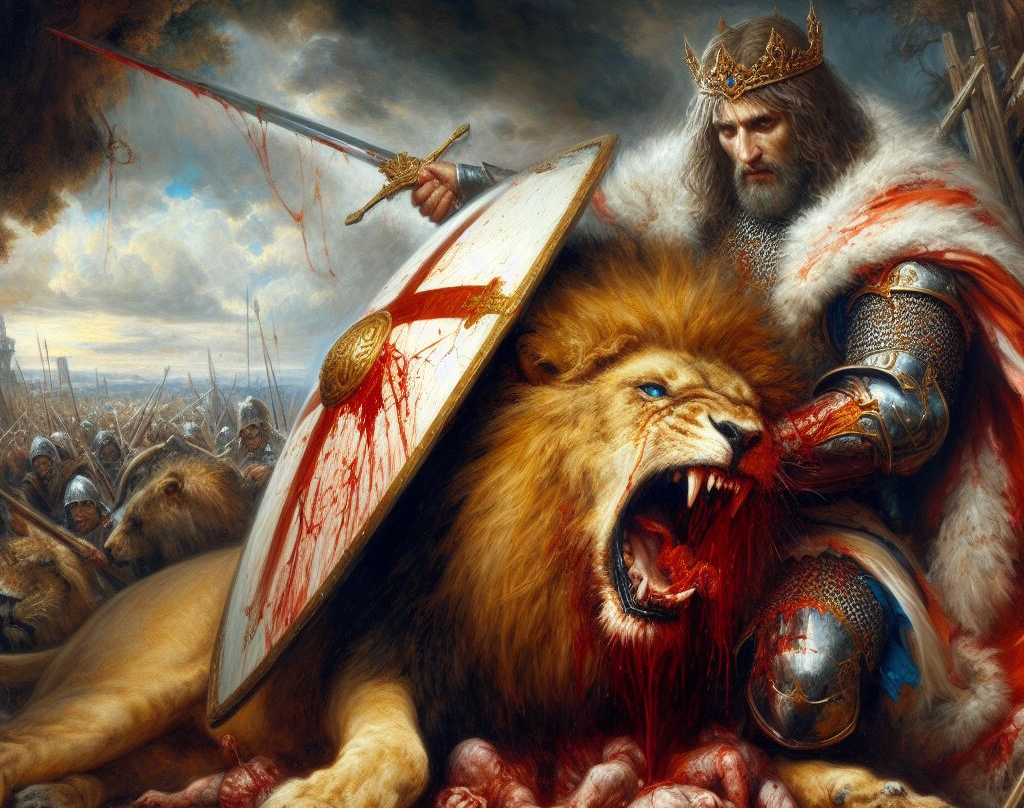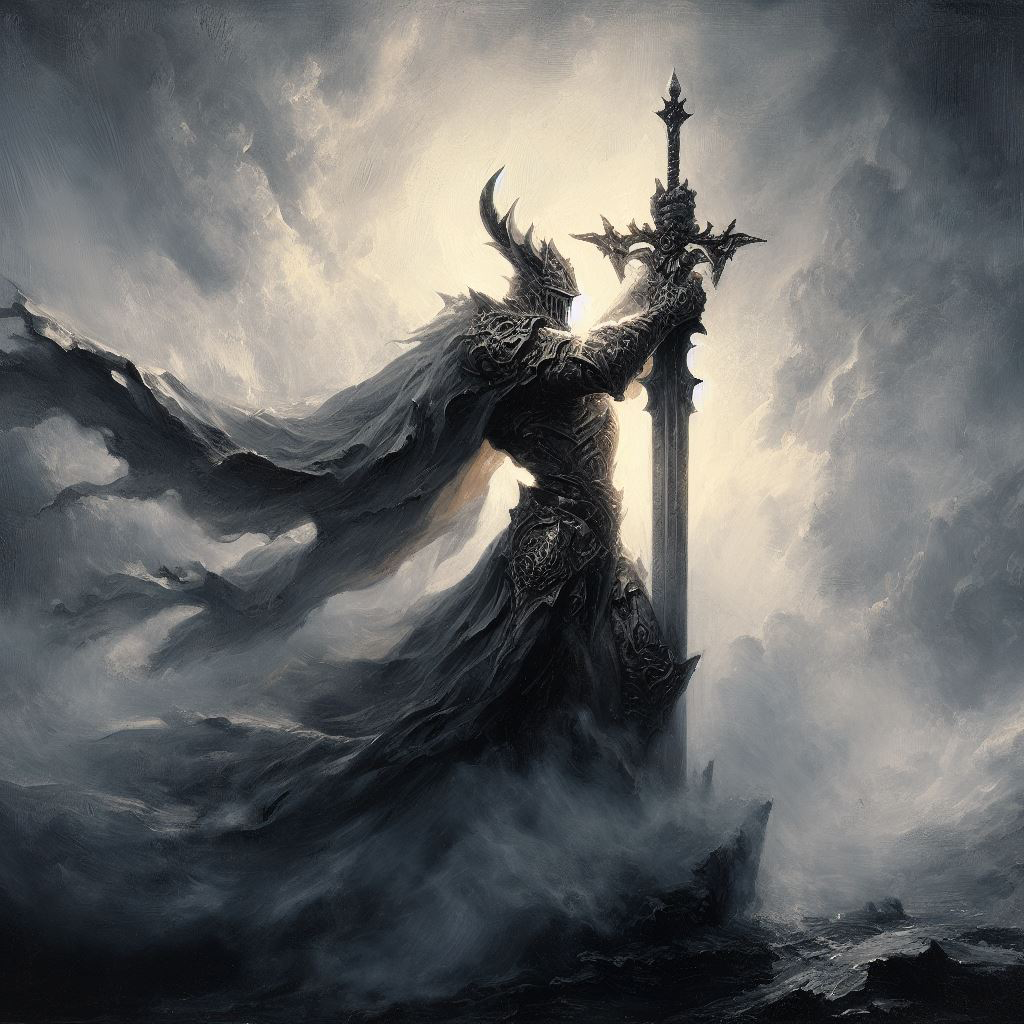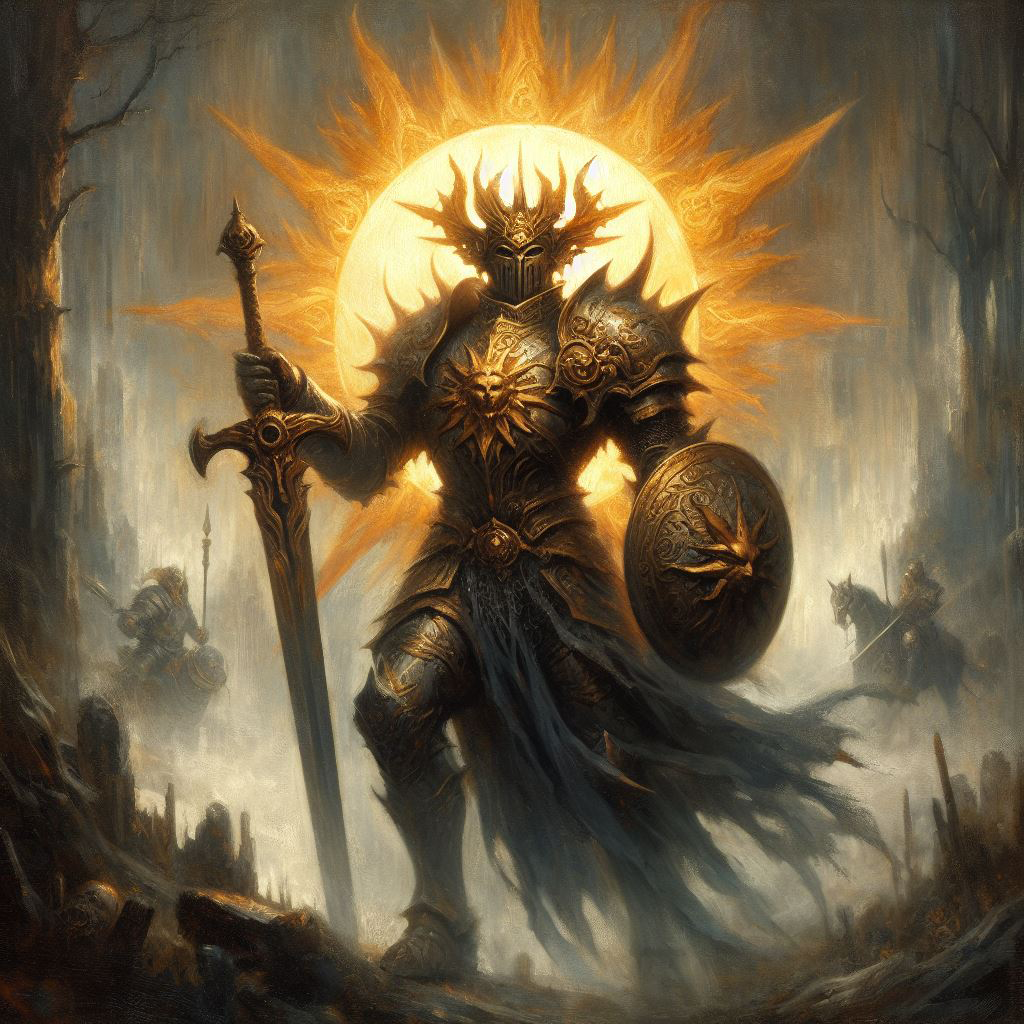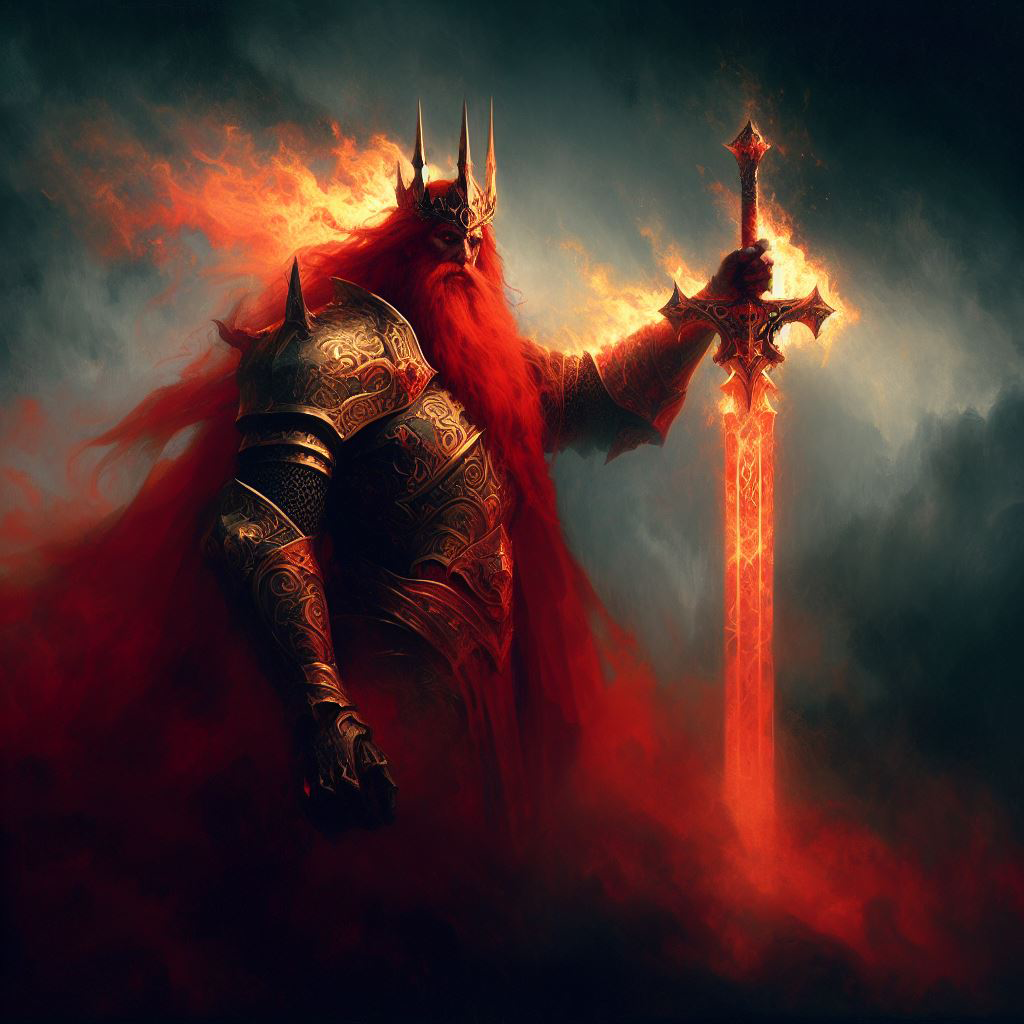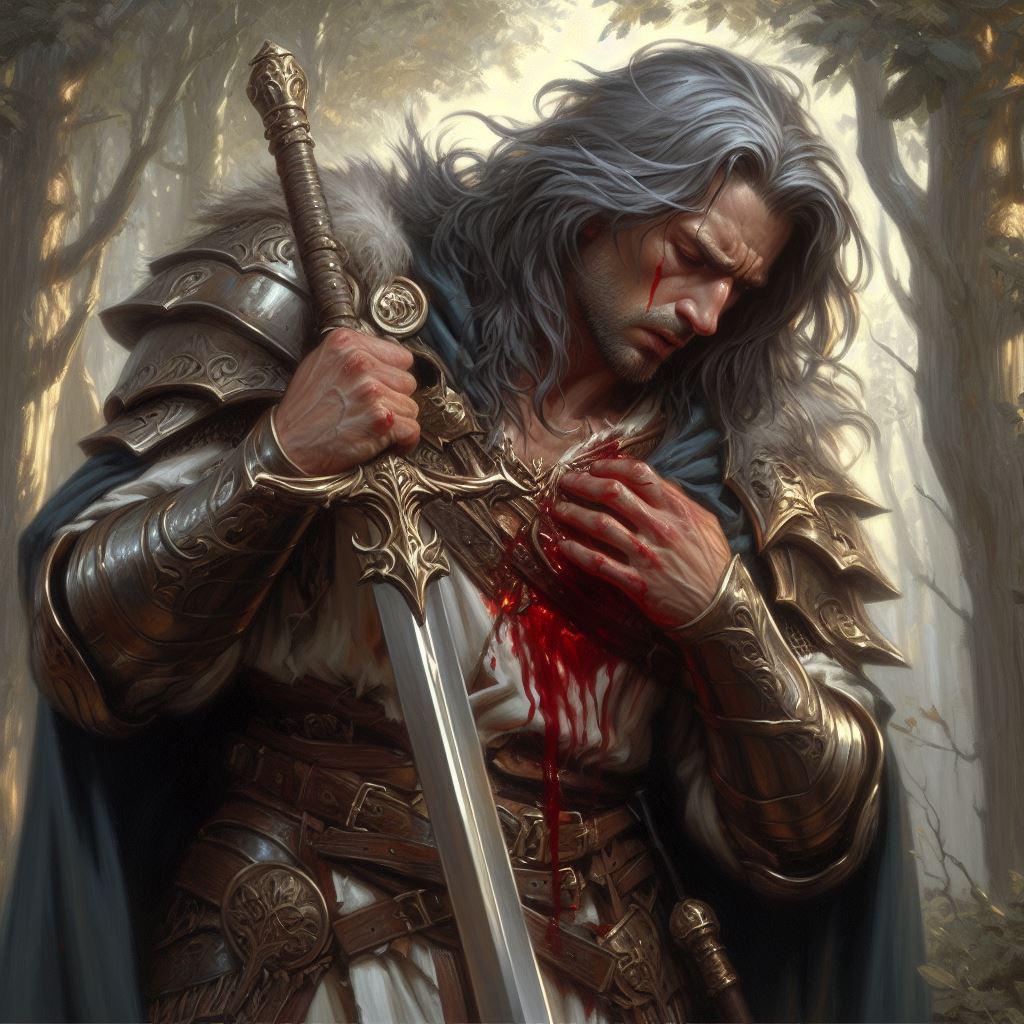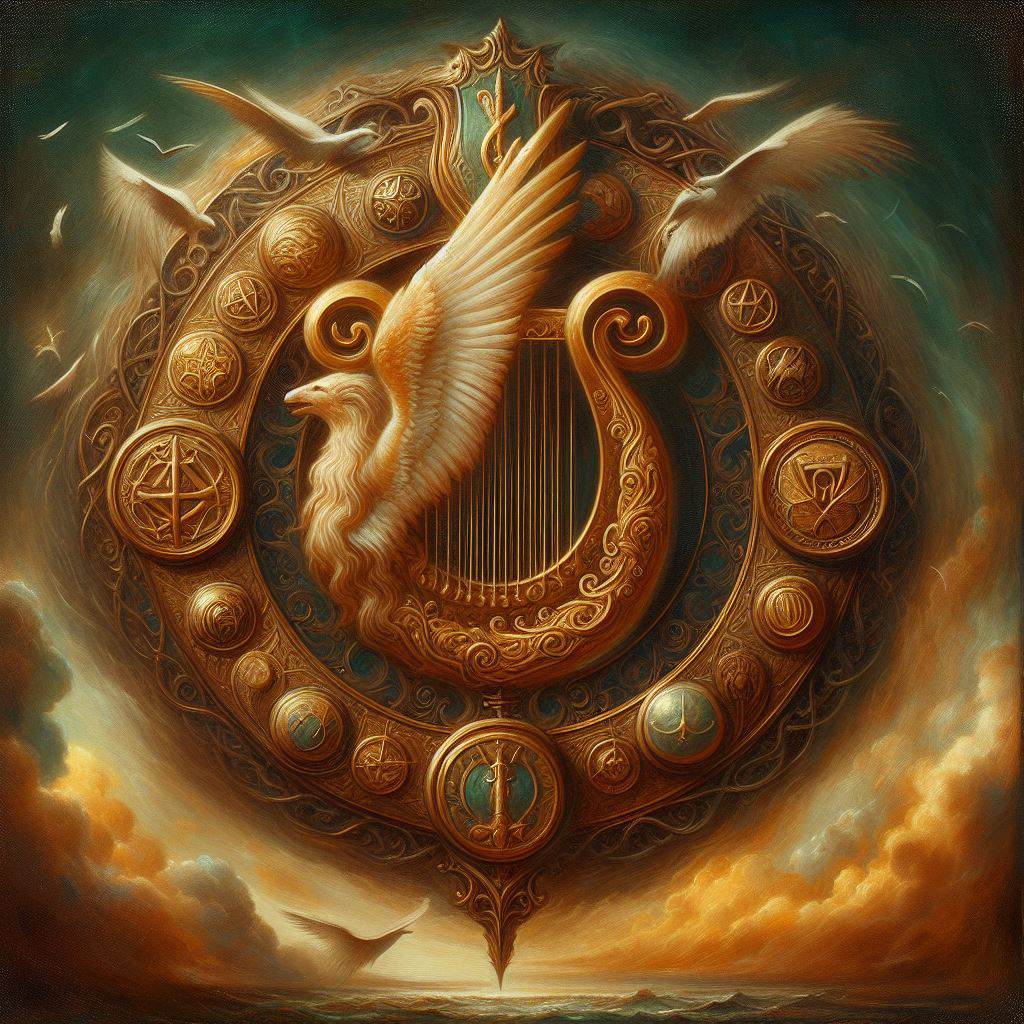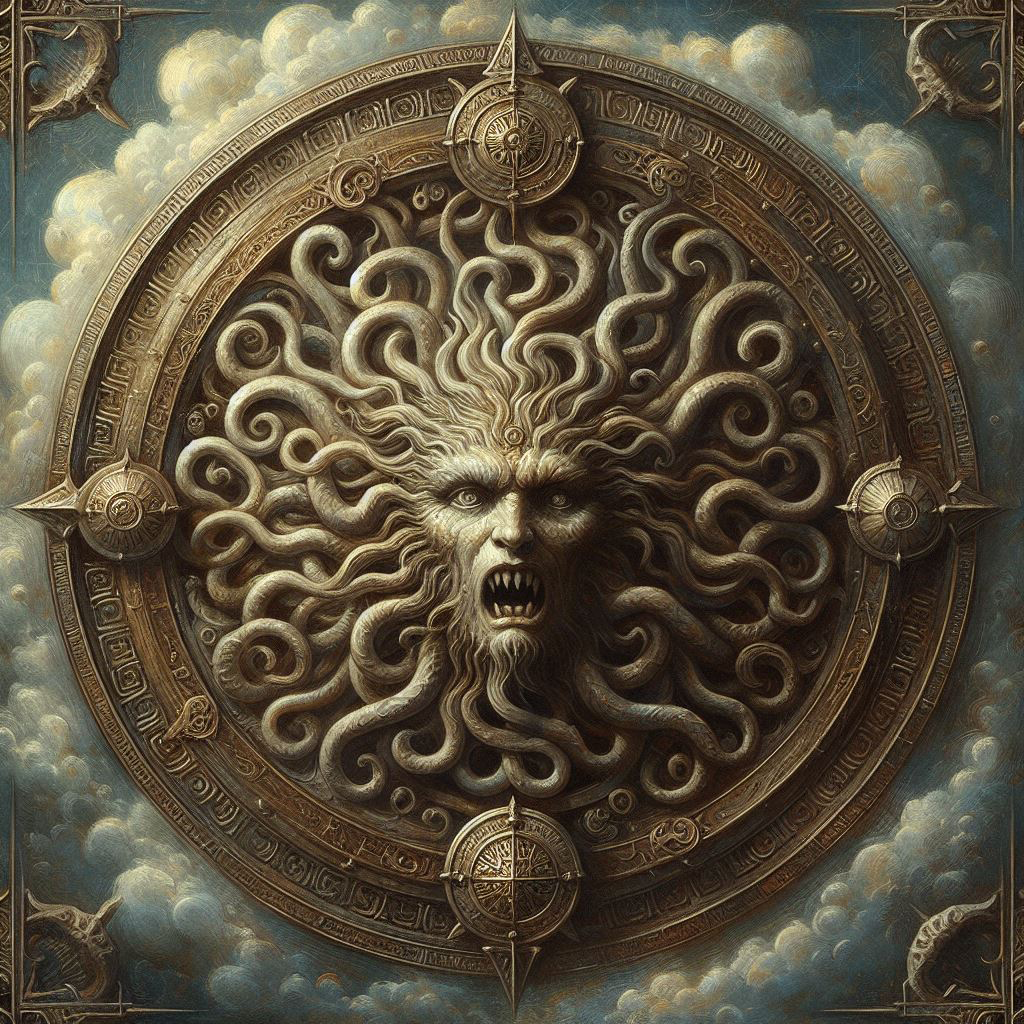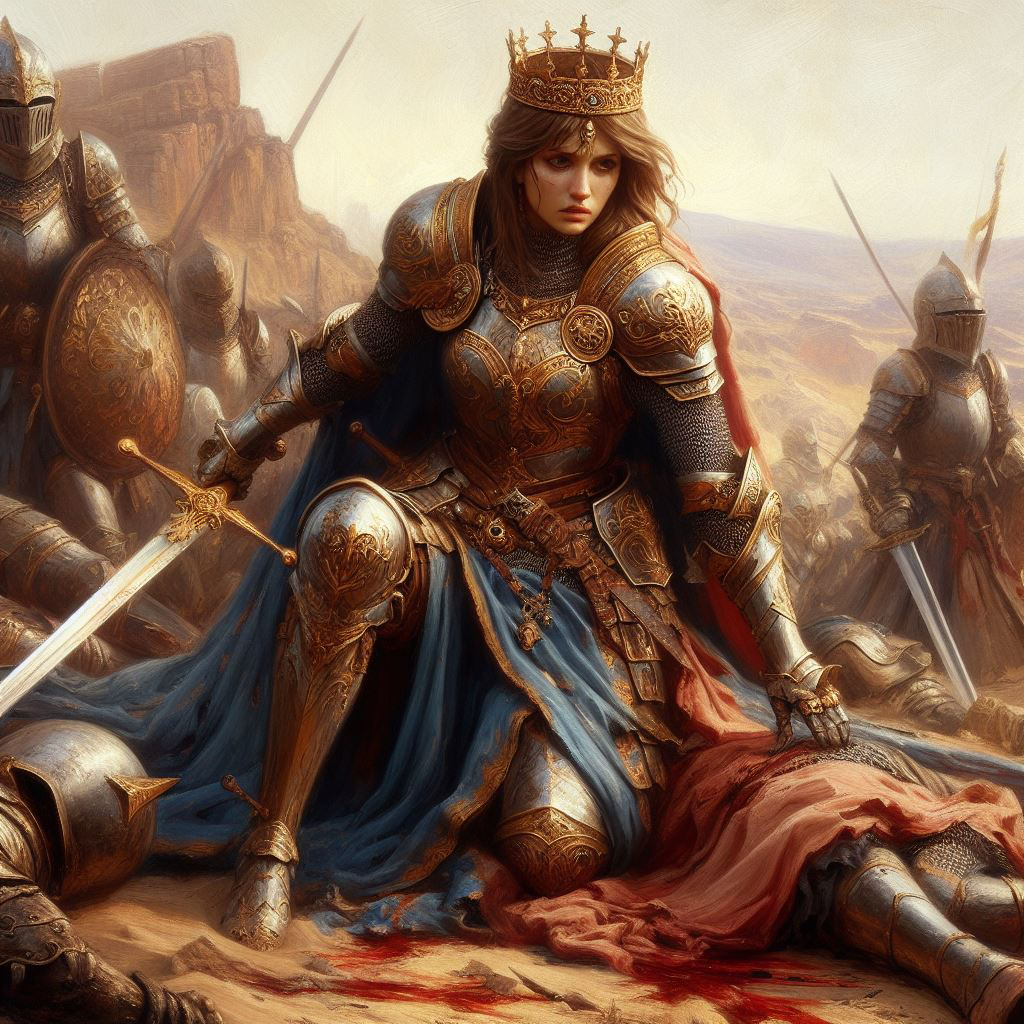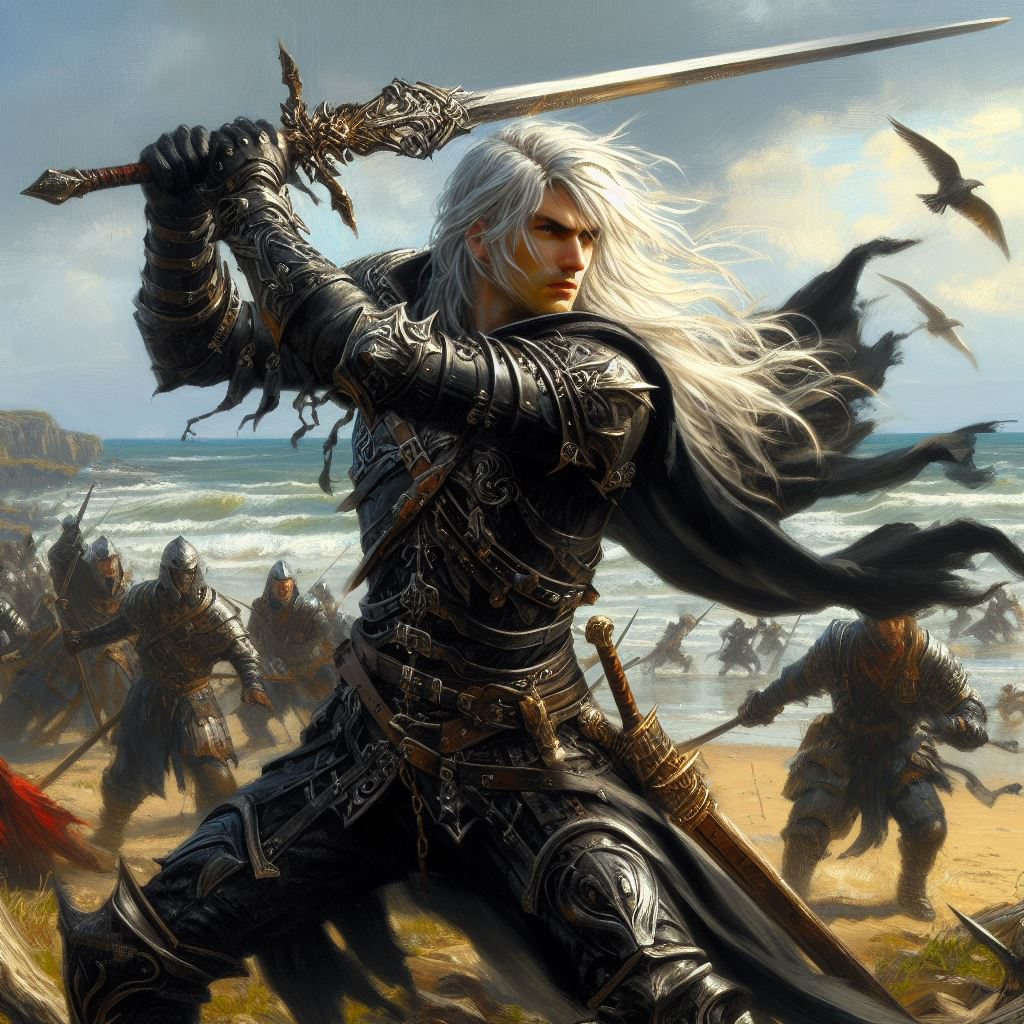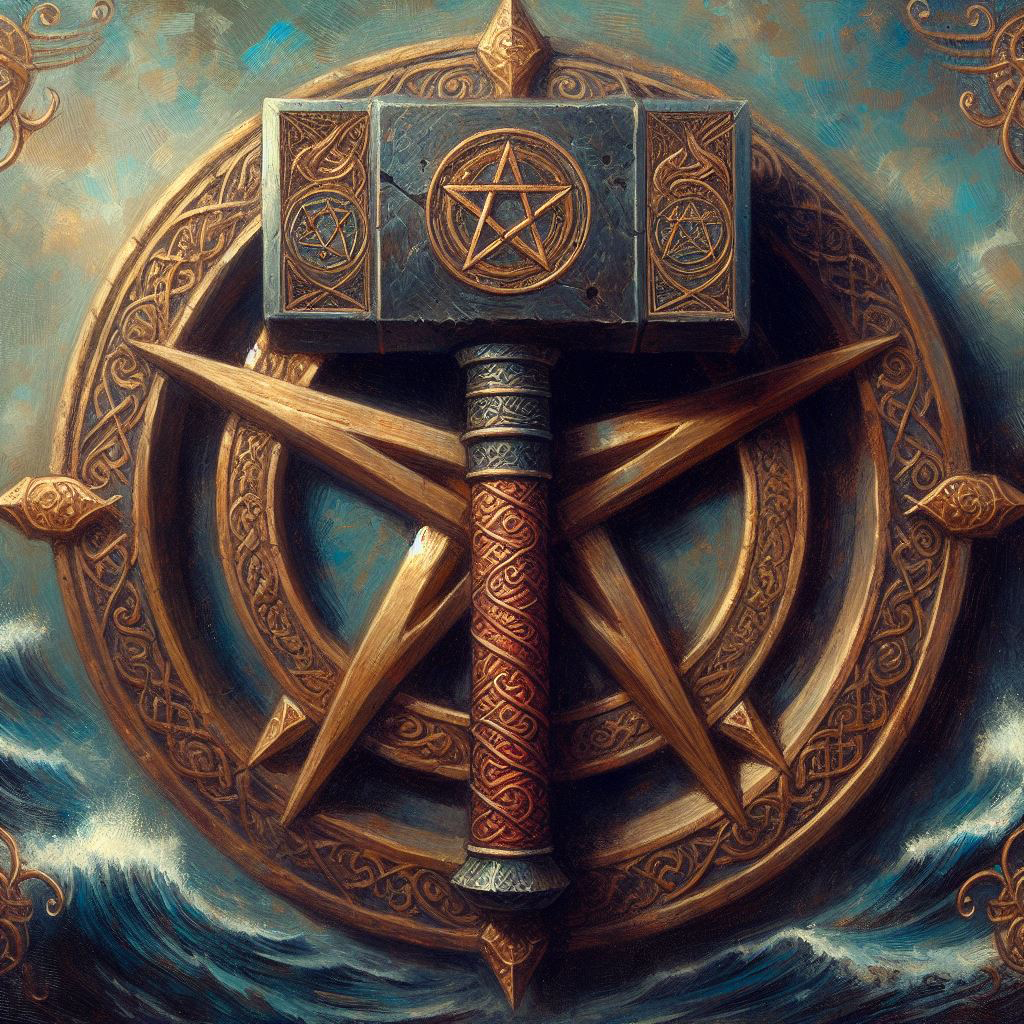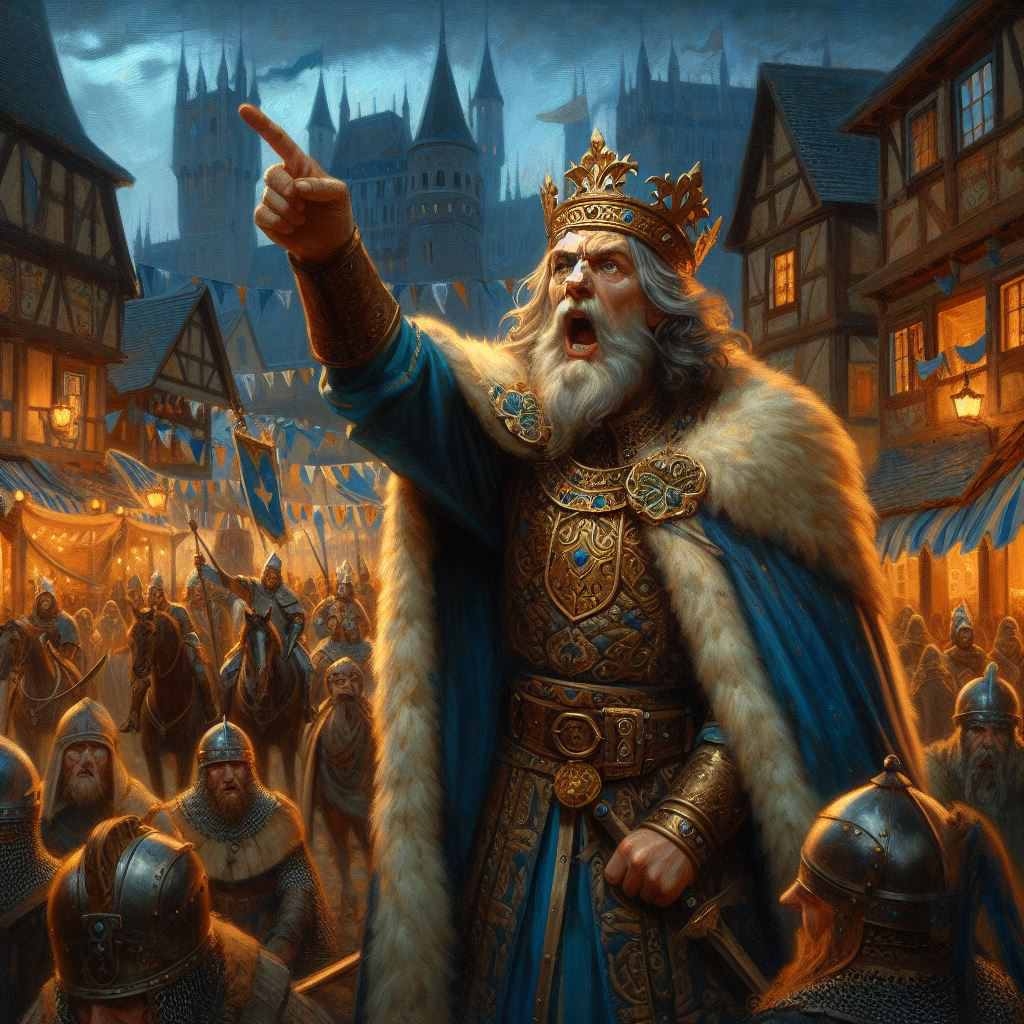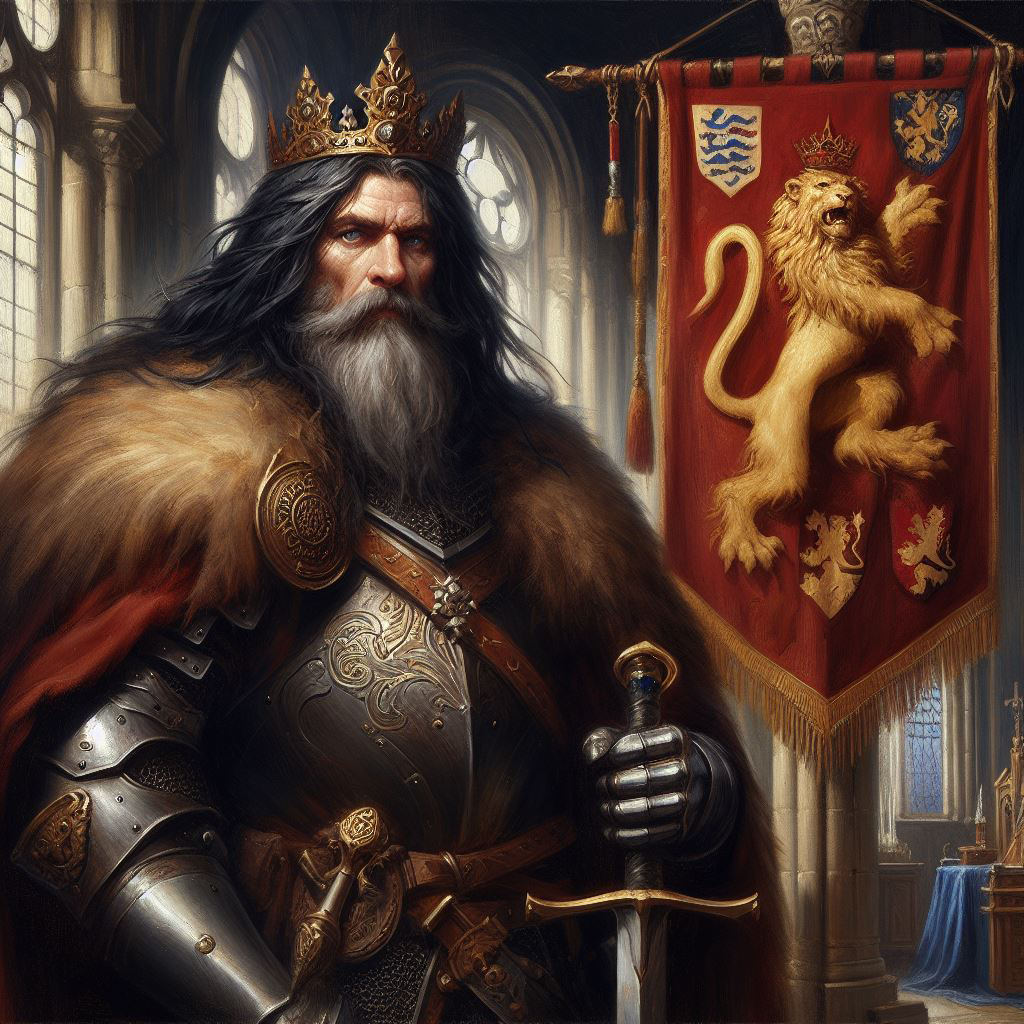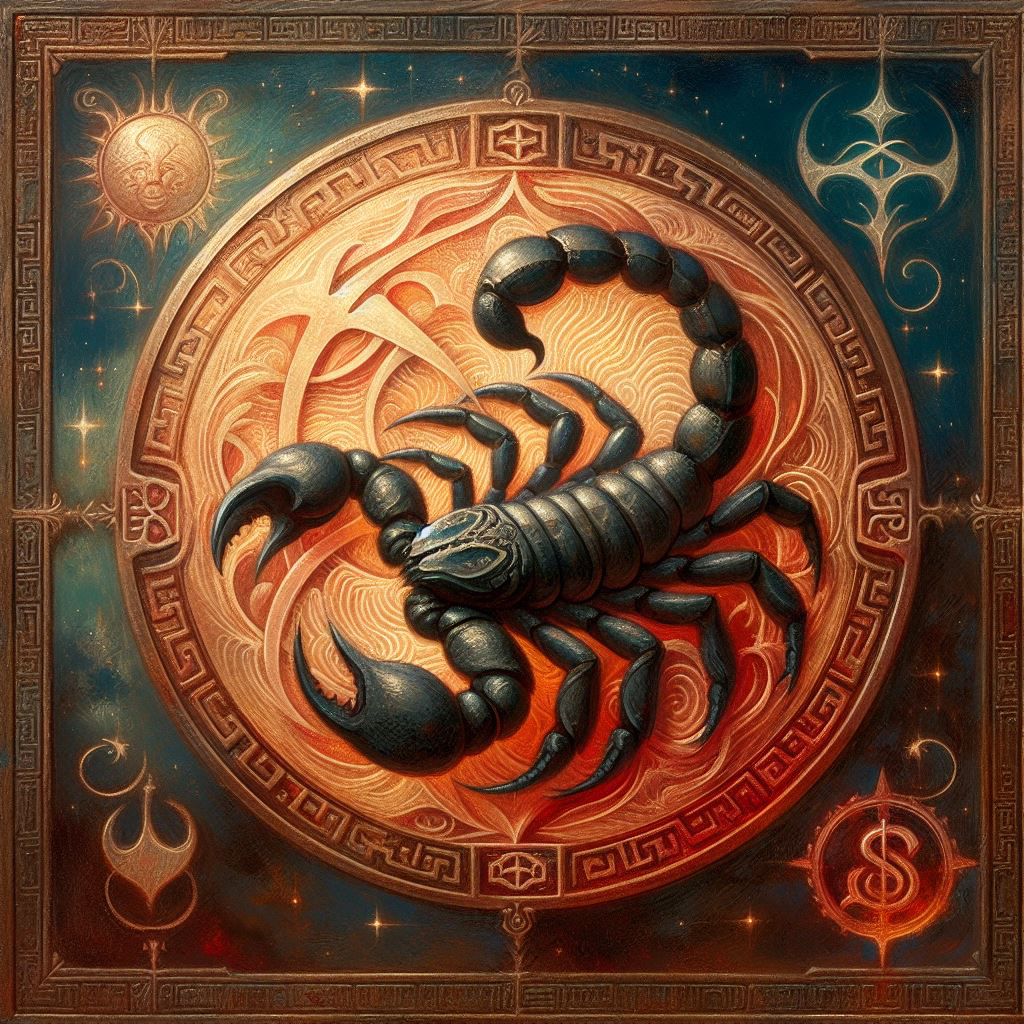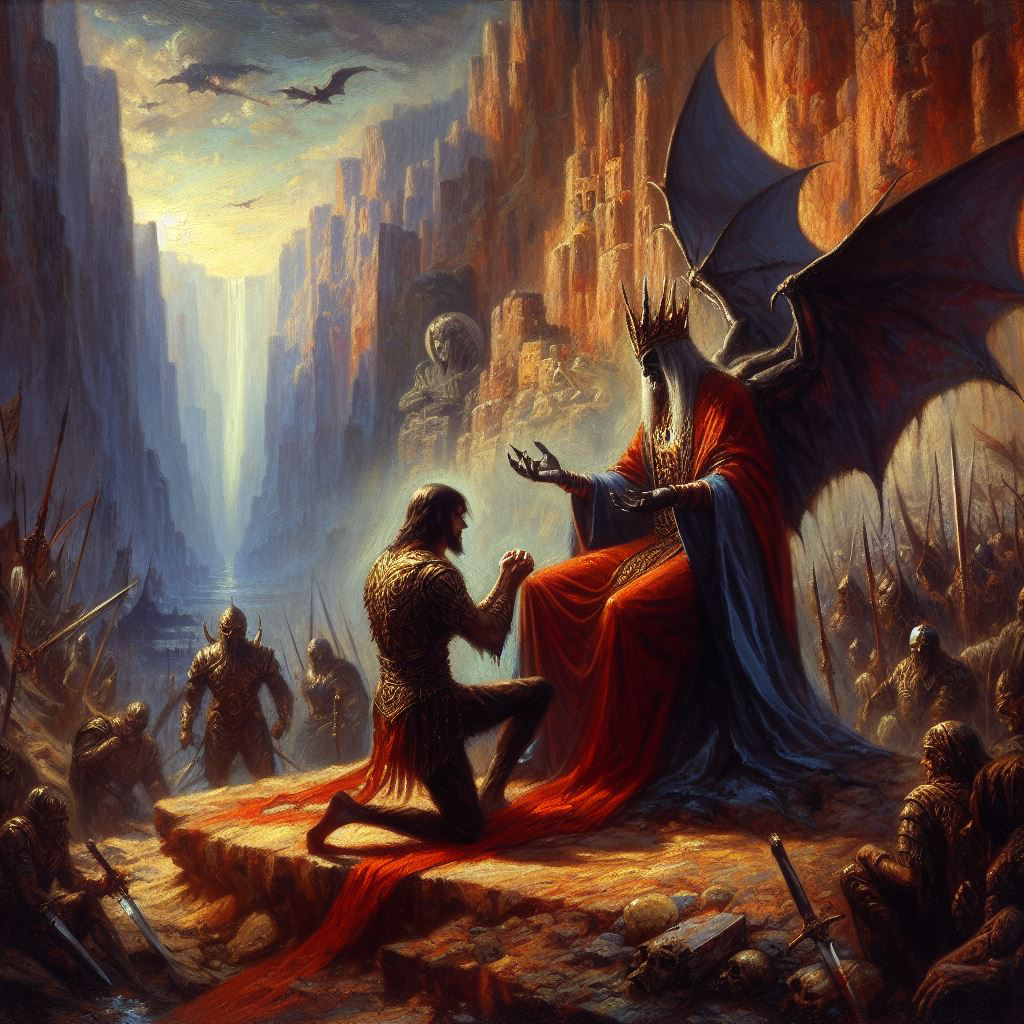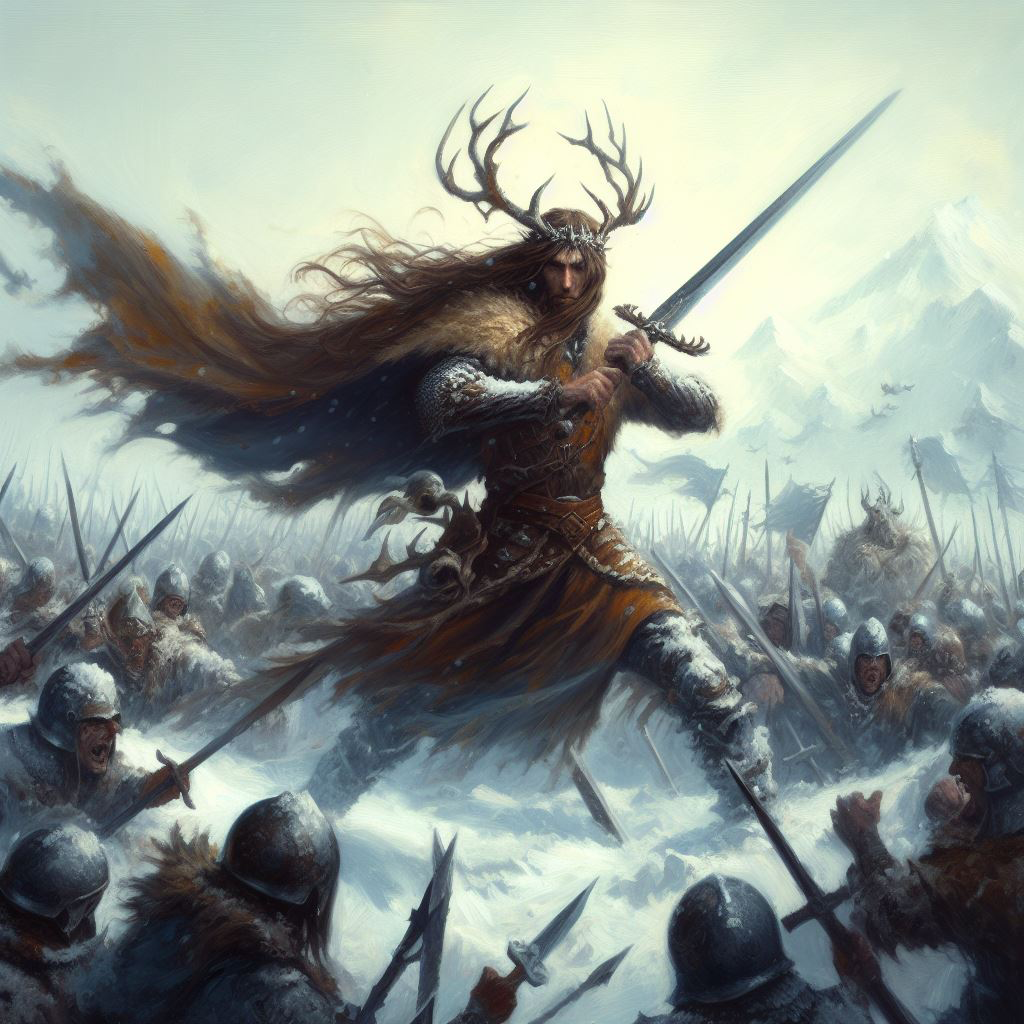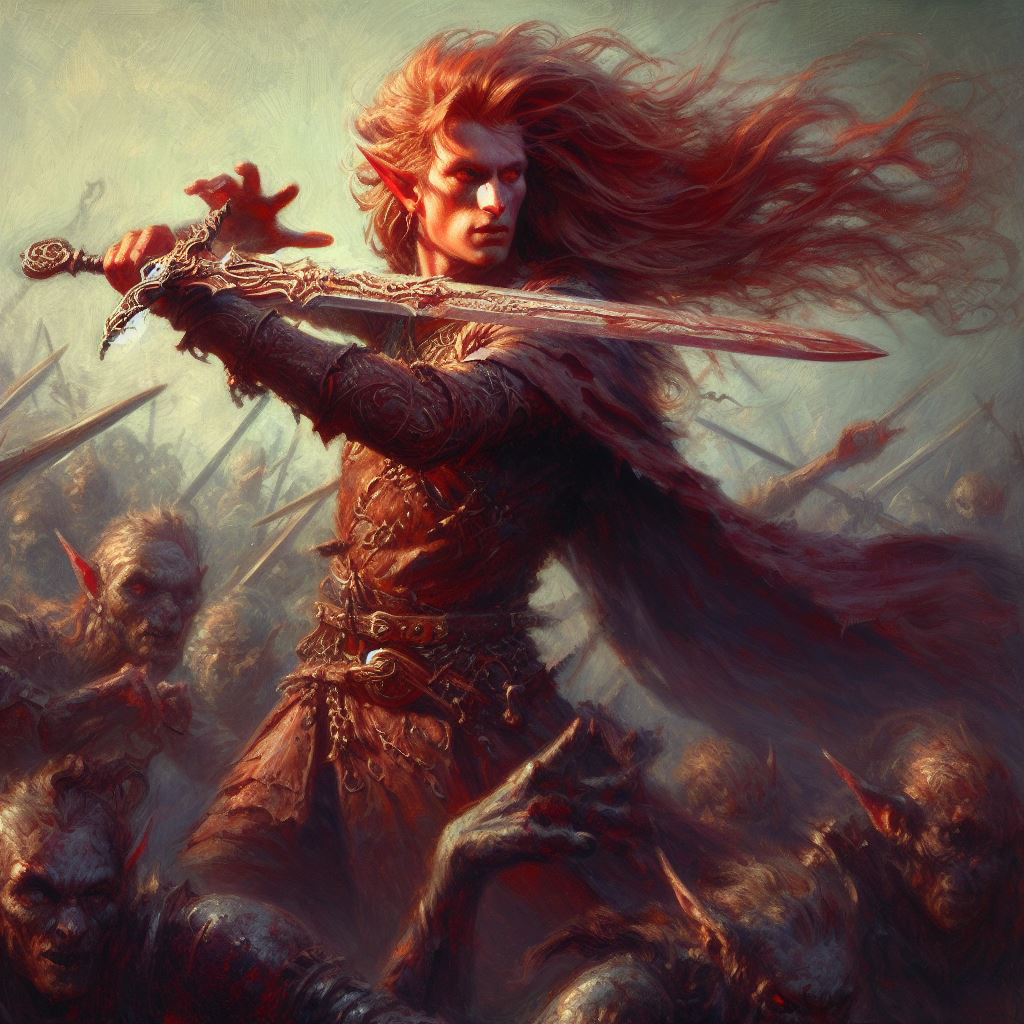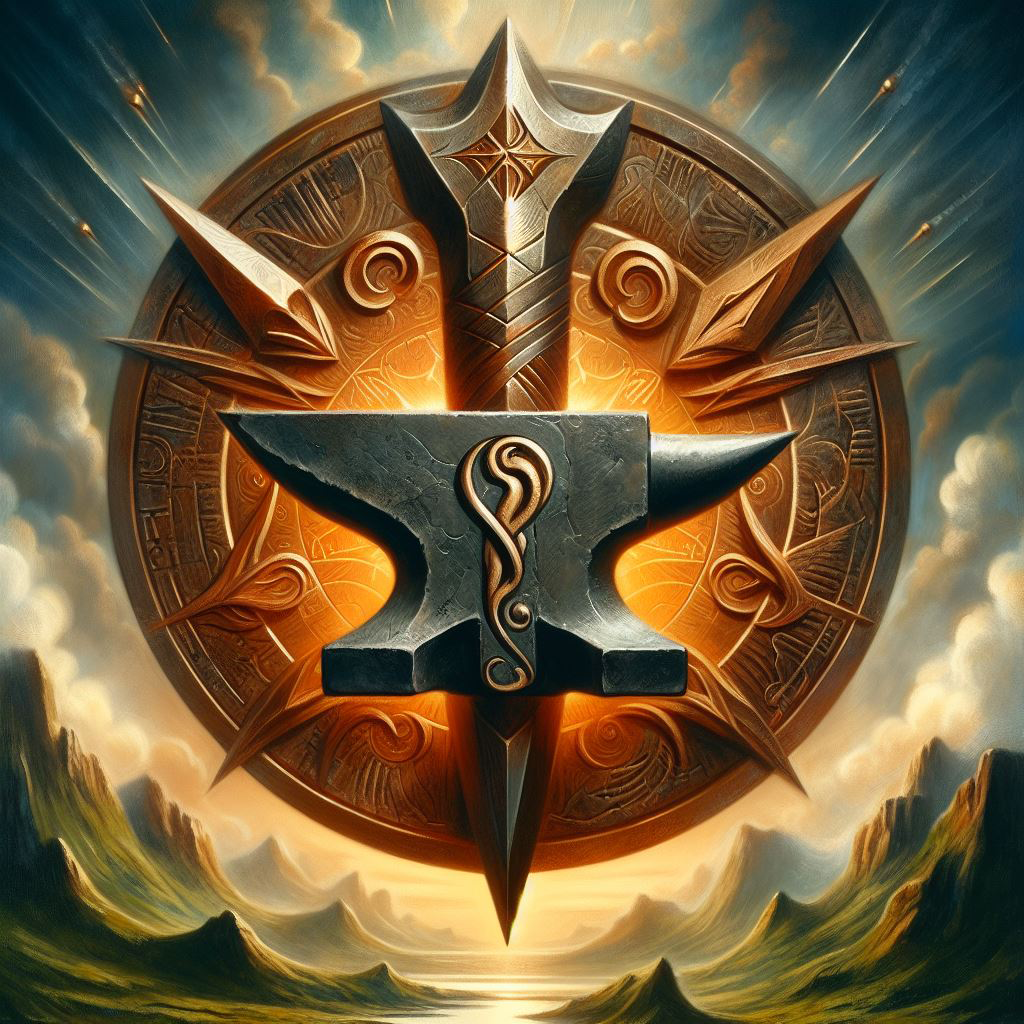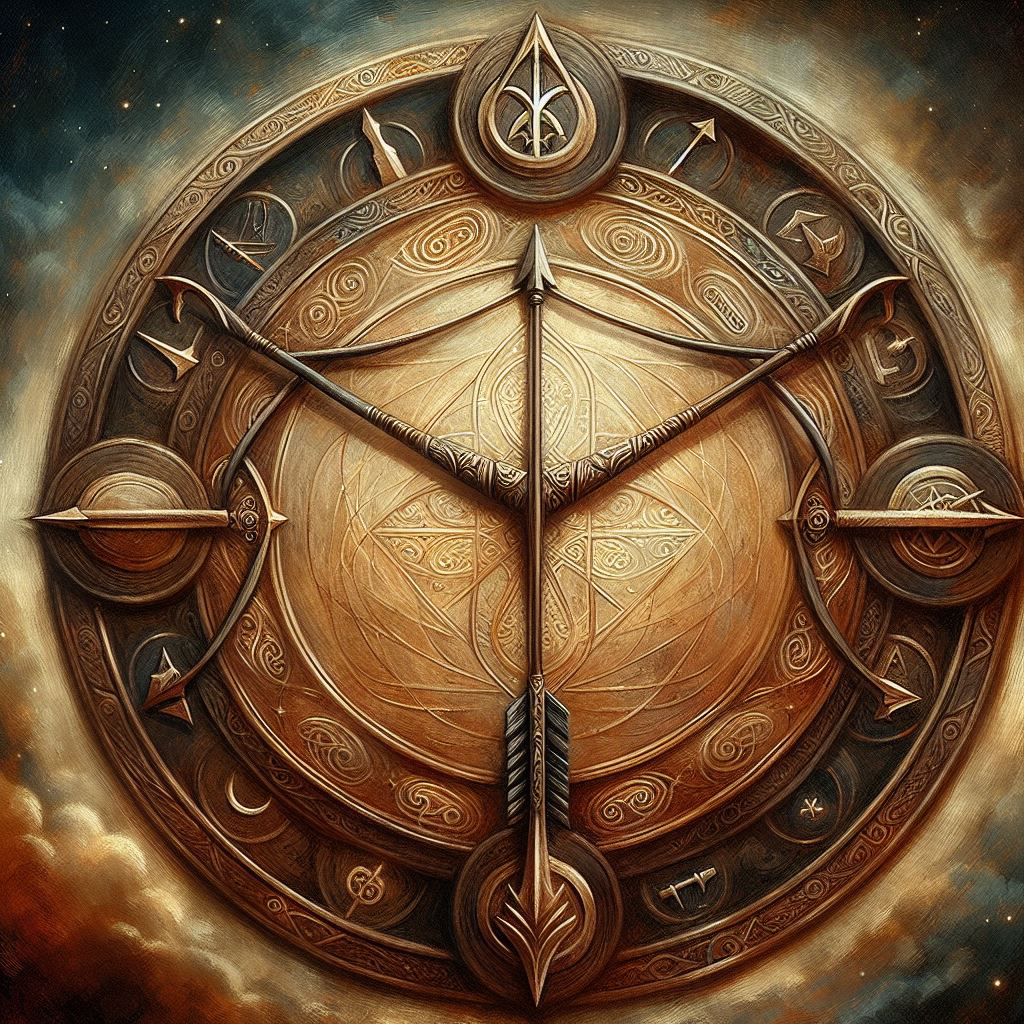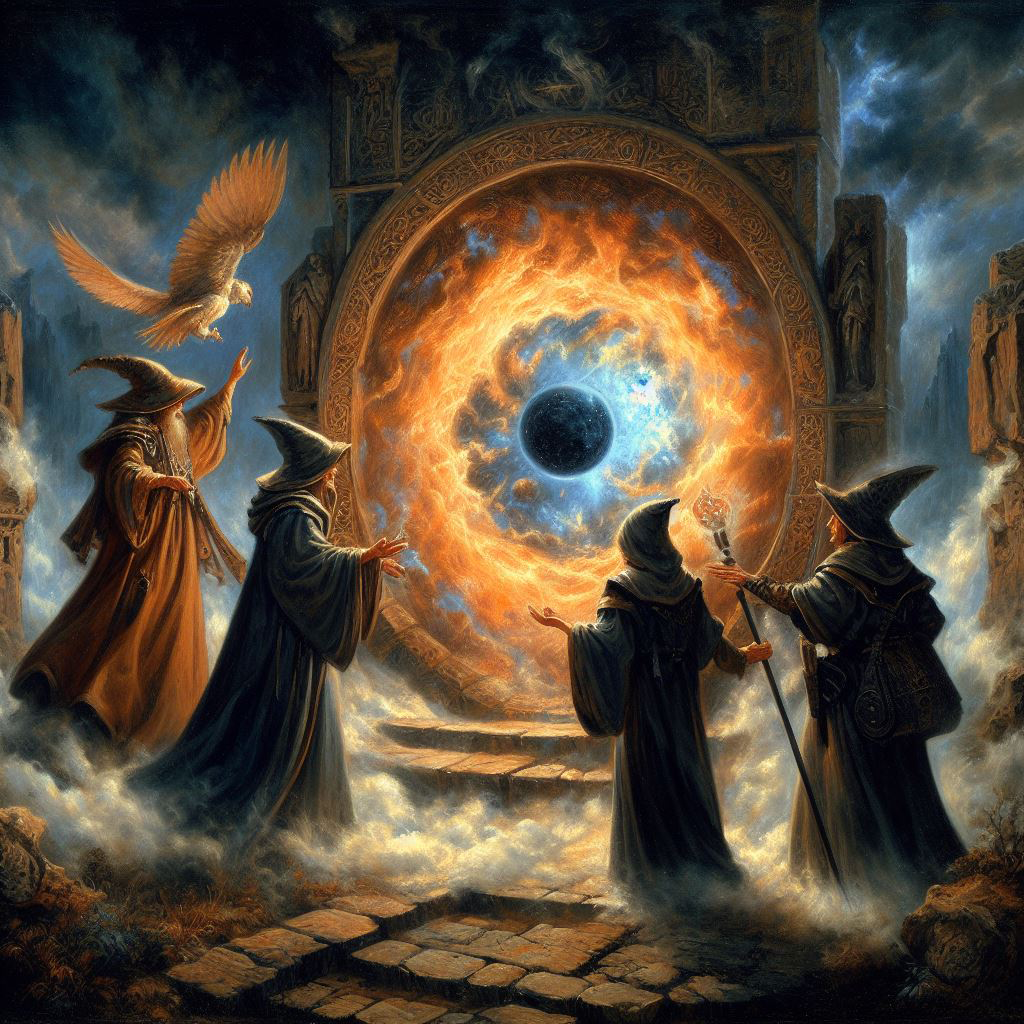
History of Lothen
Stories and events related to the kingdom of Lothen.
-
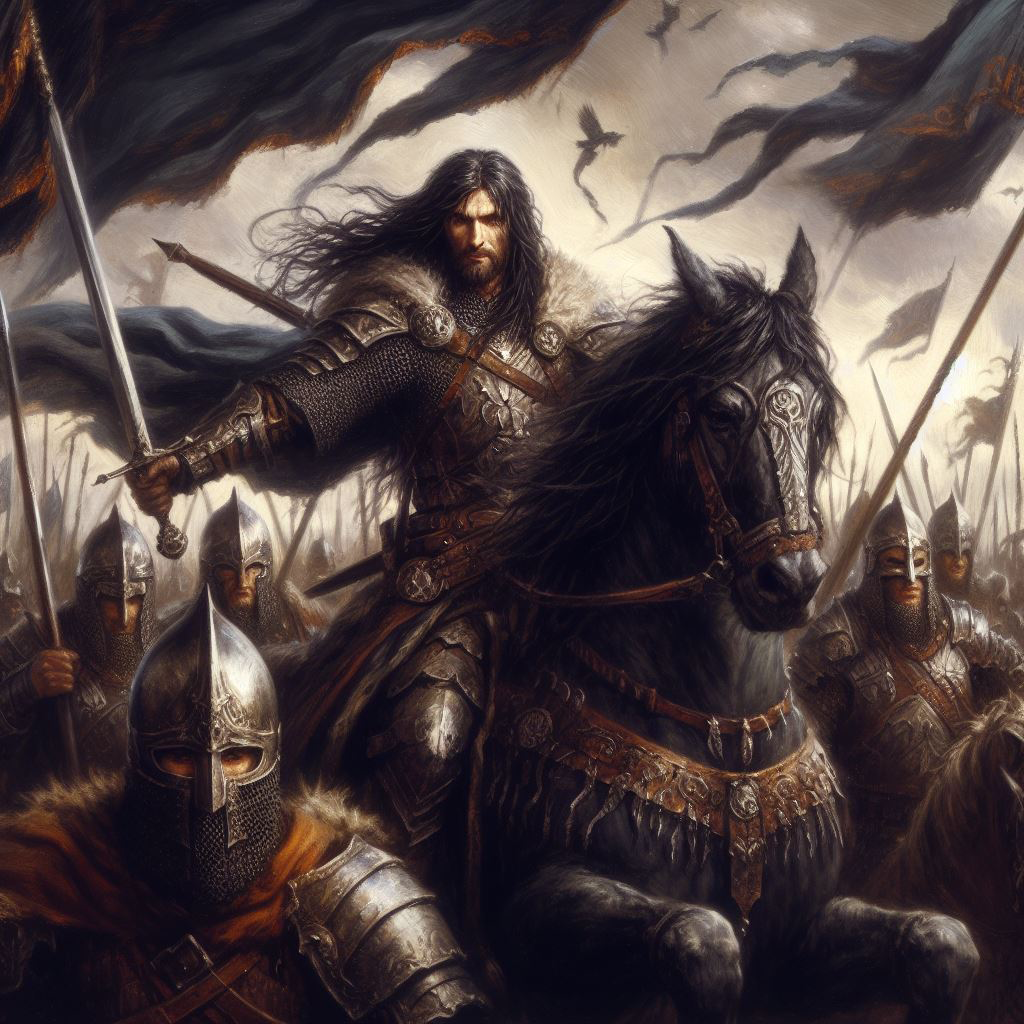 10 BC
10 BC
Brother of Gods
ExpeditionVheod Whiteshield, dubbed the "Brother of Gods," earned his name even before the end of the Great War. Leading the Mountain Tribes, which eventually became the first Lothenians, he rallied Human forces and forged an alliance with the Knight Gods. Honored by the Gods' presence, Vheod gained renown by defeating a legendary lion using only an almond-shaped, white shield. This feat led the Mountain Tribes to follow him in the First Quest of the Great War, showcasing his leadership and prowess on the battlefield. -
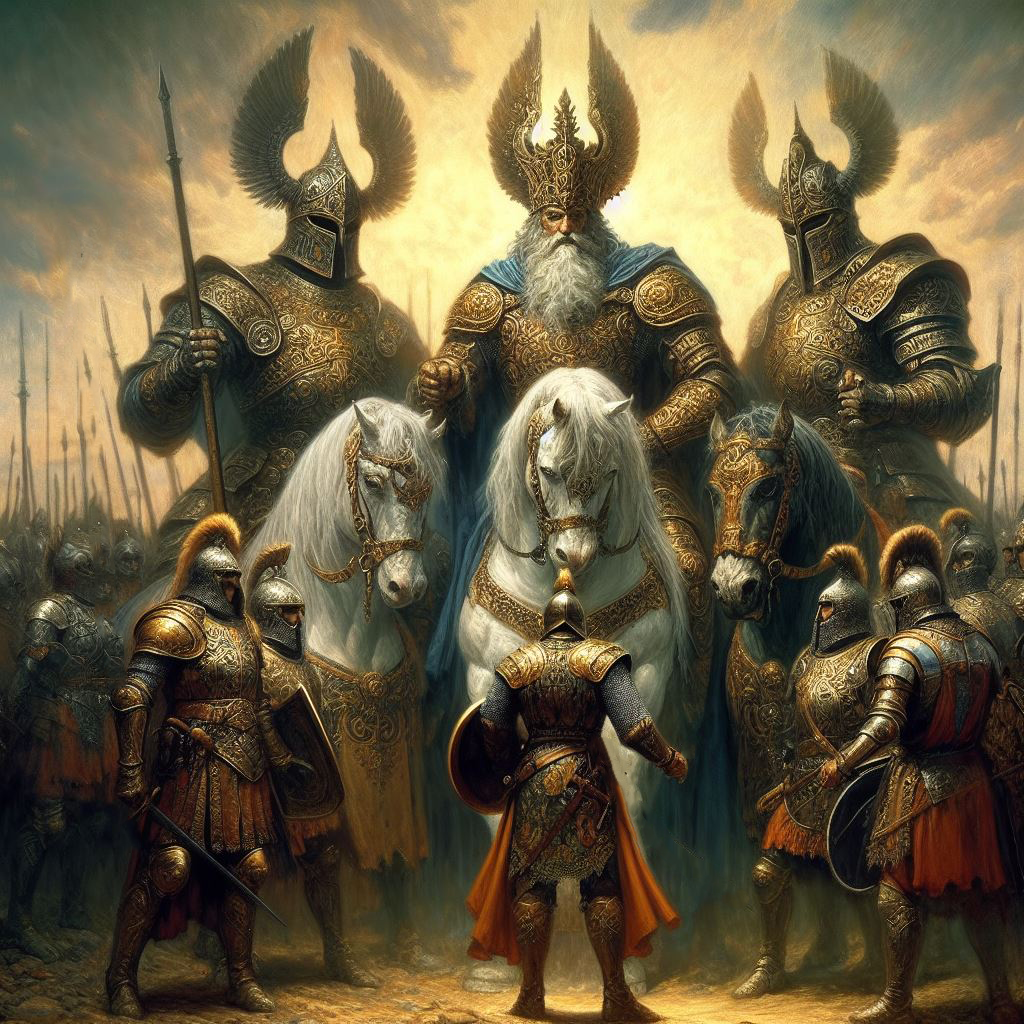 9 BC
9 BC
Of Gods & Men
Gathering / ConferenceIn a solemn gathering before his people, Vheod Whiteshield pledged his army to the Knight Gods—Justar, Arkallis, and Solisis—for the decisive confrontation against Nedel the Hunter. As a gesture of goodwill, King Vheod offered the Gods the healing waters of his lands, and the divine waters miraculously healed the wounds inflicted upon them in the war against Nedel. This generous act solidified the blessing of the Gods upon King Vheod and the people of Lothen, forging a sacred alliance that would shape their destiny in the unfolding events of the epic conflict. -
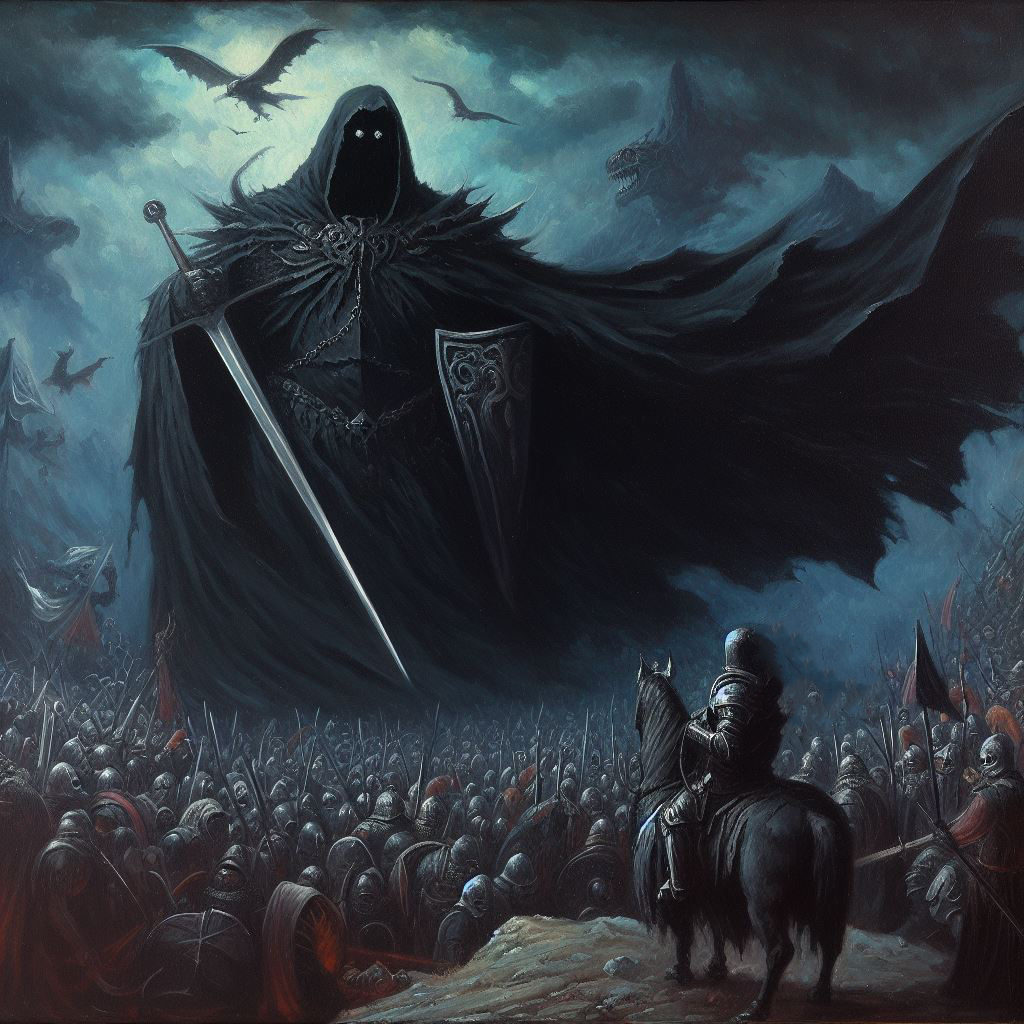 7 BC
7 BC
1 BC
The First Quest
ExpeditionEmbarking on the First Quest, the Three God Knights and the armies of Lothen, under the leadership of King Vheod Whiteshield and first general Odarion Whiteshield, traversed the Western Road to confront Nedel near the great Crater. Amid the mountains of Armorgrand, they encountered the Goddesses Mora and Shyrune, who offered shelter, safe passage, and guidance for their northern route. Months later, the united armies engaged in a brutal battle against Nedel, joining forces with several armies from Central Vitallia. This devastating conflict unfolded on multiple fronts, with the most intense clashes occurring in a location later known as "Dead Gods Lane." The scale and ferocity of the battle marked it as the most impactful and destructive in the history of the world. -
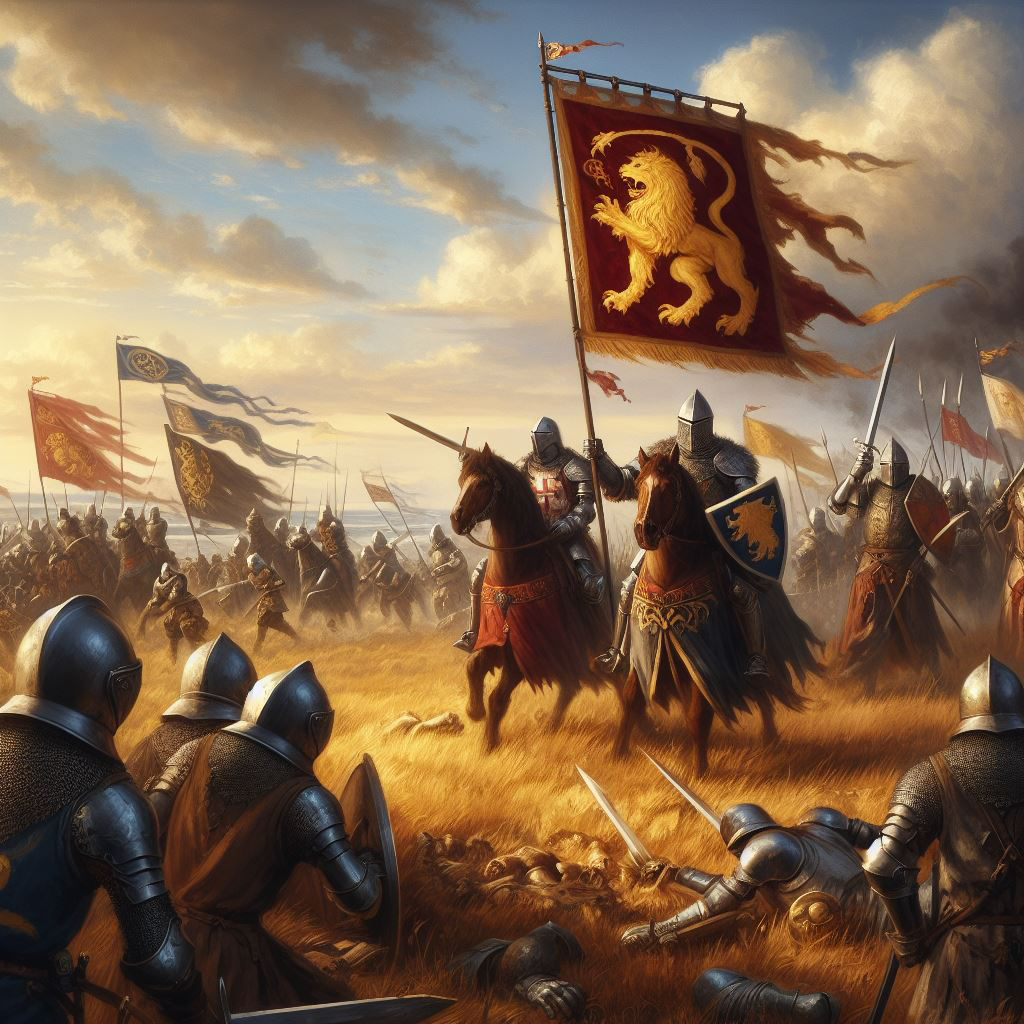 200 AC
200 AC
208 AC
The War of the Fork
ExpeditionLothenian armies aggressively extend their influence to the east, securing territories along the banks of the Fork River. The Lion army encounters minimal resistance, gradually assimilating the kingdoms of Igros, Sol, and Sarta into its dominion. This strategic expansion enhances Lothen's territorial control and strengthens its presence in the eastern regions.Location
The Forklands -
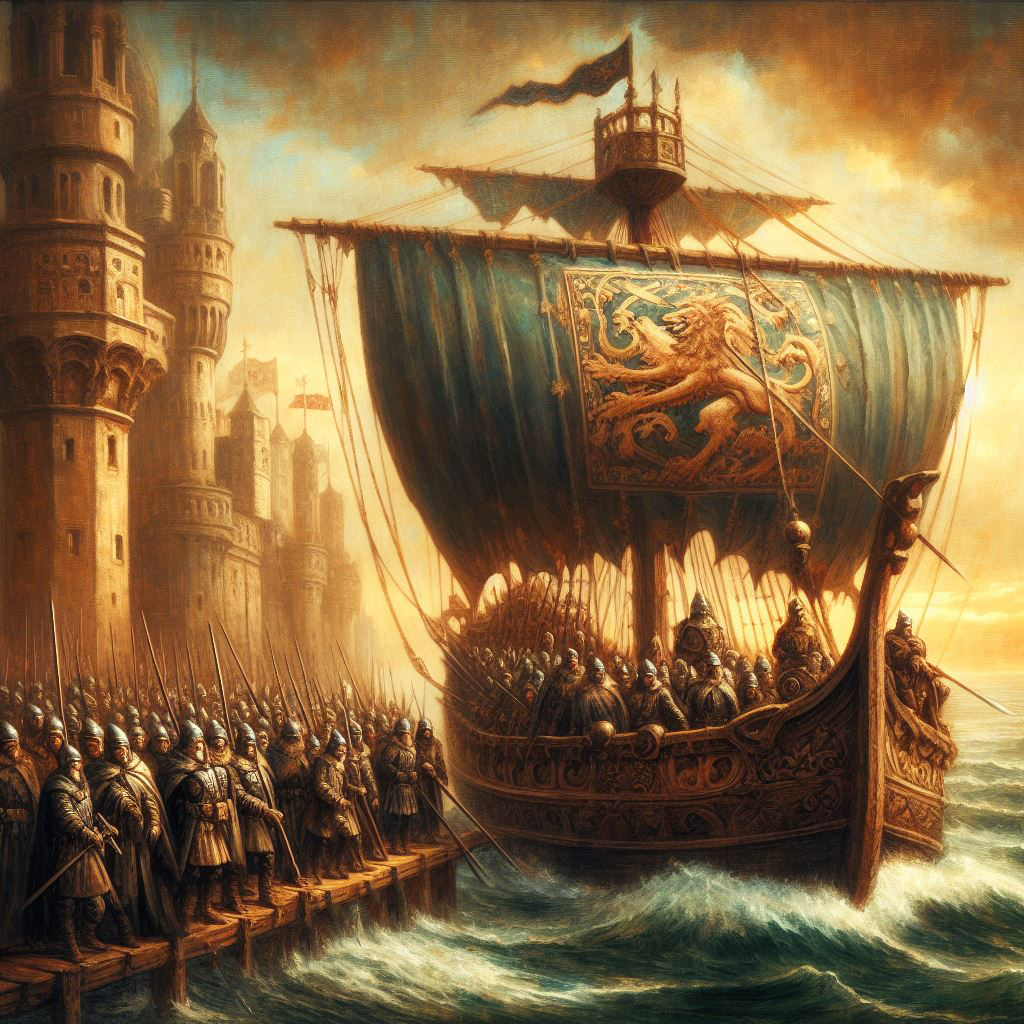 208 AC
208 AC
Lothen's Expansion
ExpeditionThe initial two hundred and fifty years of the new age witnessed a dynamic period of expansion. Throngs of people migrated in various directions, and the kingdom of Lothen experienced substantial growth both industrially and in population. Boasting the most organized and well-equipped army in Central Vitallia, Lothen extended its influence to the southern islands, ventured northward into the territories of Monsters, and expanded eastward by establishing new colonies. In 208 AC, Adam Whiteshield, the king of Lothen, earned the title of king of the Four Great Kingdoms as subsidiary colonies pledged their fealty to him. -
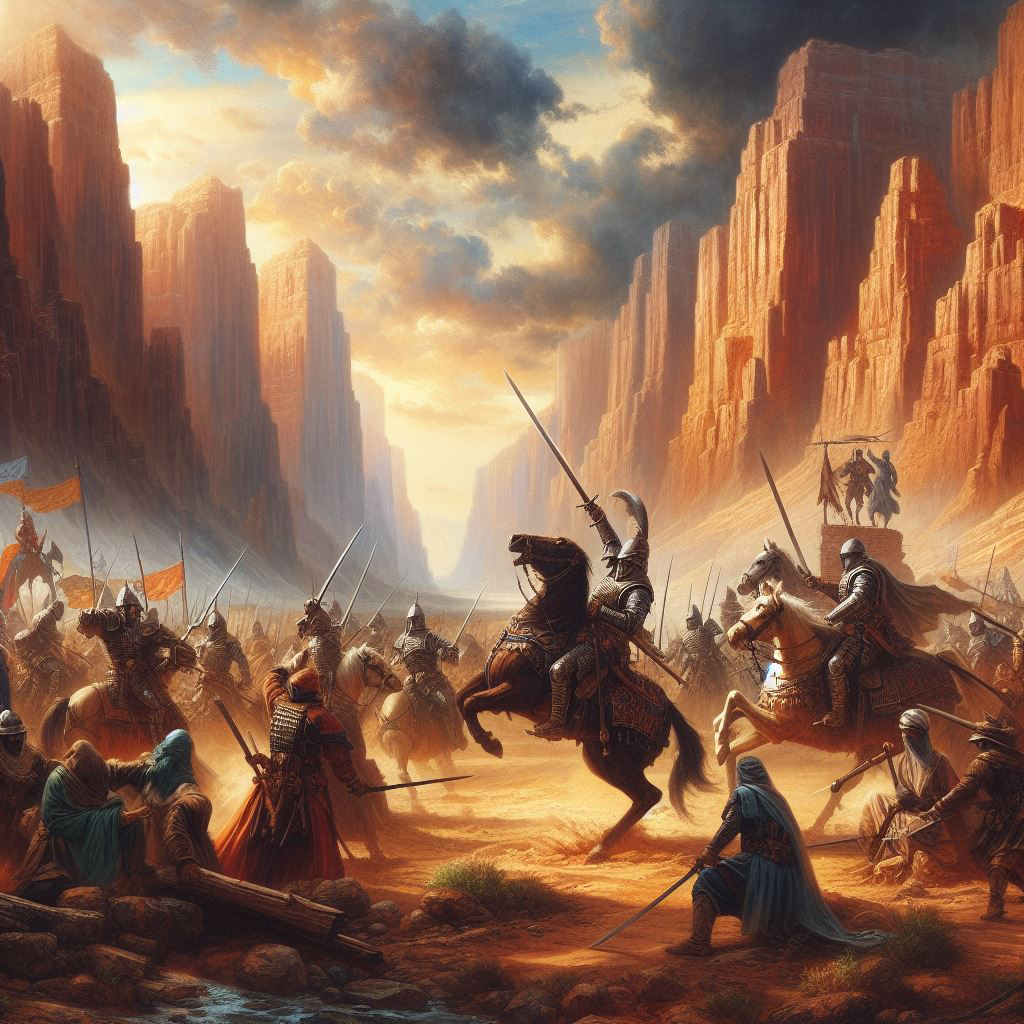 363 AC
363 AC
The War of the Mask
Military actionIn 363 AC, Queen Aryan Whiteshield declared war against Dragoria in what became known as the War of the Mask. The conflict unfolded in the mountains between the two kingdoms. Sarta supported Lothen in the war. However, the Knights of the Lion couldn't successfully siege the cliff-built cities of Dragoria, resulting in a prolonged conflict that spanned several years.
-
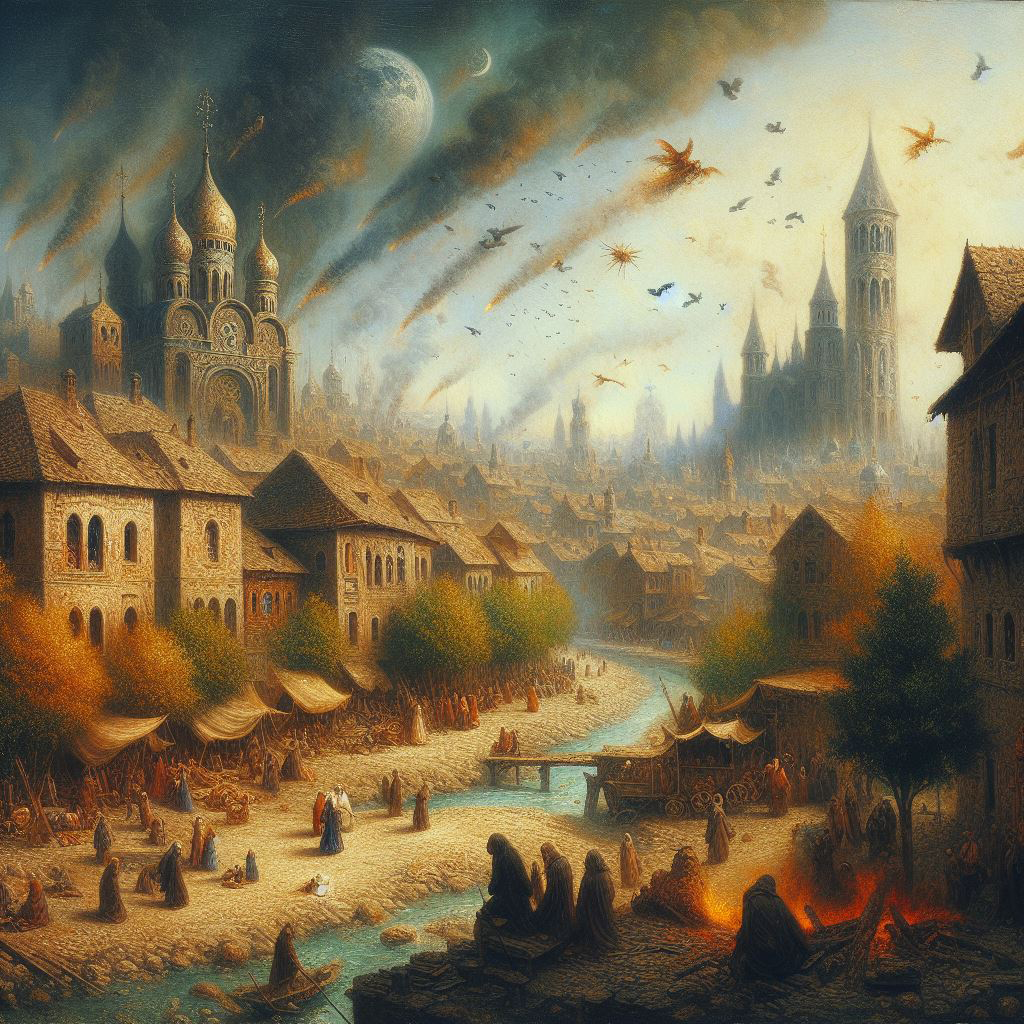 396 AC
396 AC
The Plague of Lothen
Plague / EpidemicIn 396 AC, the kingdom of Lothen was undertaken by a plague that killed thousands of people. A party of explorers under the command of the Queen’s son, prince Valam Whiteshield, traveled east to the Dead Gods Lane in search of the White Elixir, after the consultation of Akreyn Thiaspis. Within that search party, Iliandor Irion, a mercenary, saved the young prince from the demon Vandero. The party returned successful after a while.Location
The Dead Gods Lane -
 559 AC
559 AC
Istario's Reign
Political eventIn 559 AC, Istario Whiteshield became famous for his war mongering, after a number of civil wars and conflicts within the kingdom of Lothen. Istario earned the reputation of a mad ruler who executed his commanders for minor violations with a distinctively violent way. Crucifixions of lords and skinning of living prisoners who he thought to be traitors of the sacred blood of the Whiteshield family, took place frequently.
-
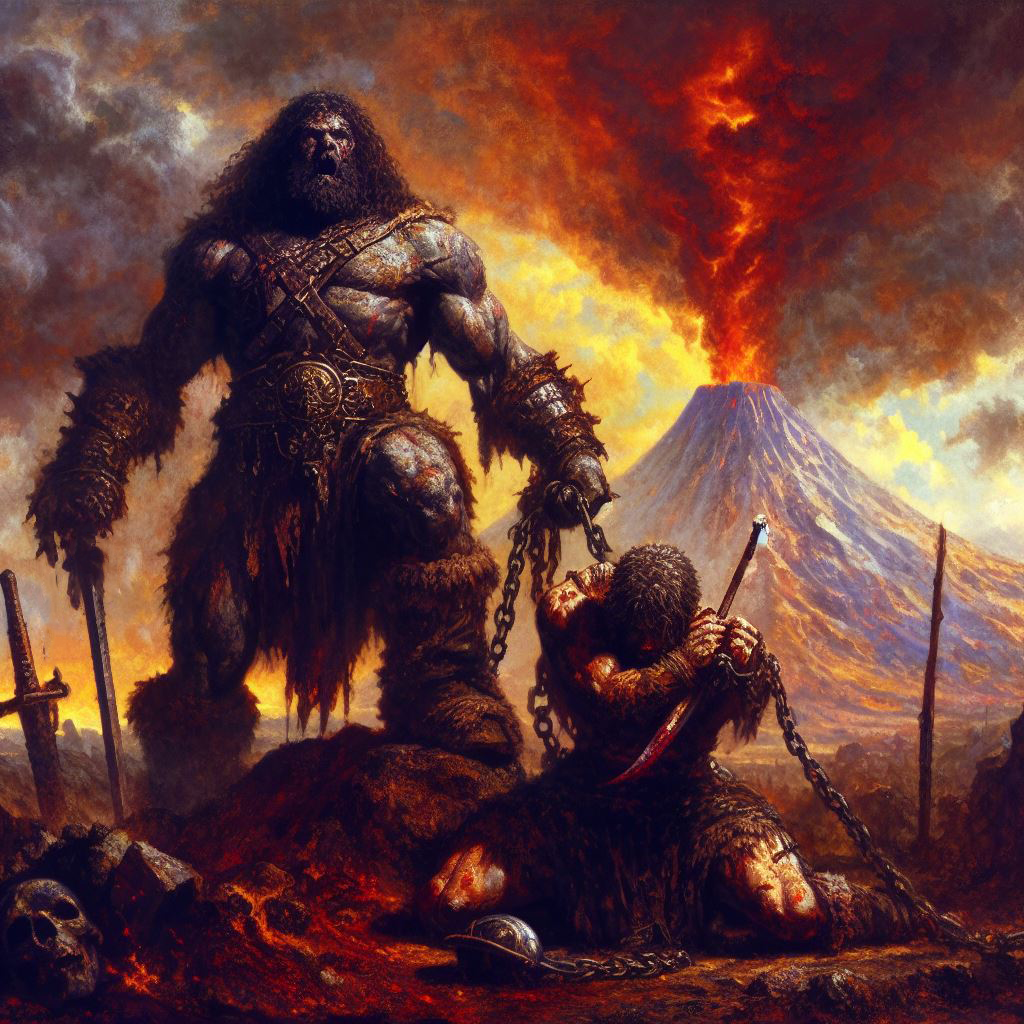 600 AC
600 AC
6 /9602 AC
5 /2
Istario's Red Hunt & the Battle of Mountain Skull
ExpeditionIn 600 AC, Istario led the Lion Army west in a conflict known as "The Red Hunt," aiming to dominate the barbaric tribes of Armorgrand, particularly the Brutgors. However, the Lion Army suffered a devastating defeat in the "Battle of Mountain Skull" in 602 AC. Istario succumbed to a rare affliction two years later, with his demise linked to the shamanic magic of the Brutgors. -
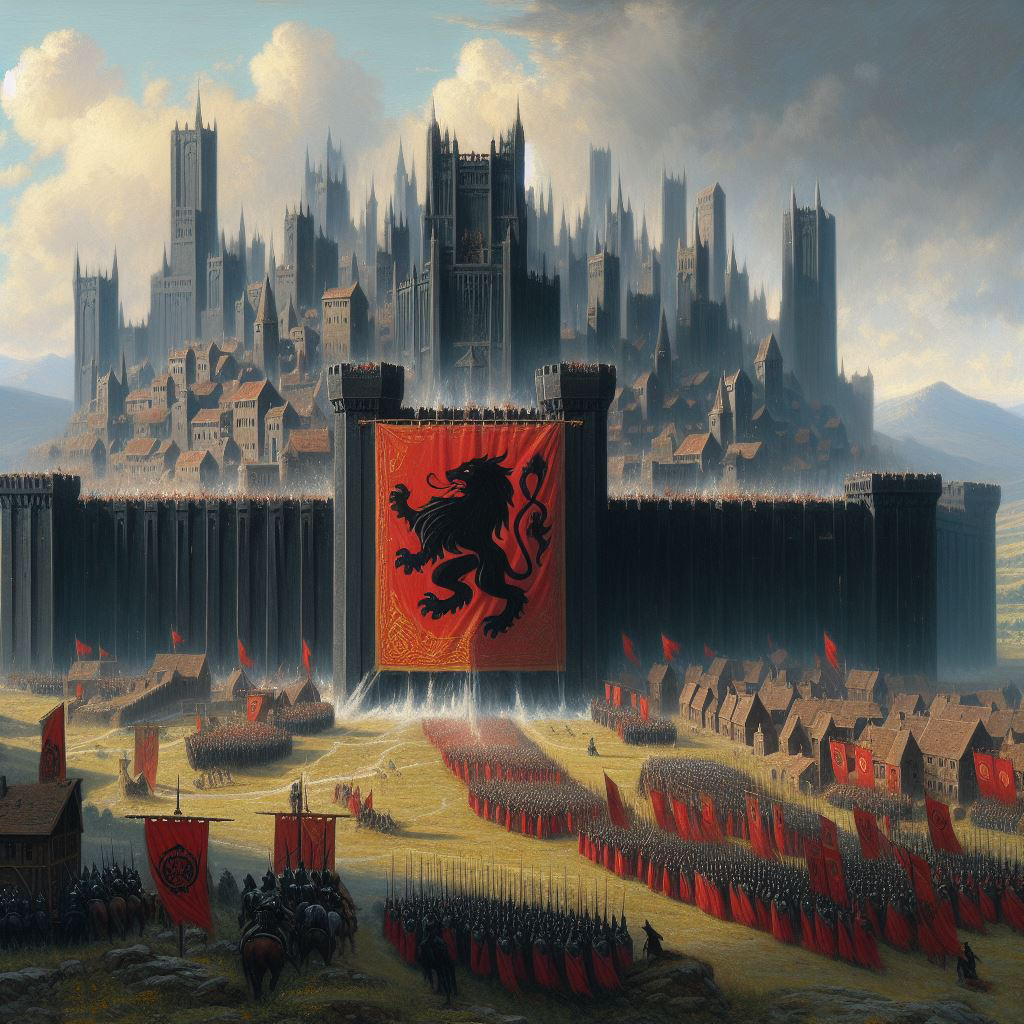 820 AC
820 AC
The Red Lion of Lothen
RevolutionIn 820 AC, under the reign of Eldaria Whiteshield, a civil war broke out in Lothen, that used as its core, a number of powerful families that endorsed the expansion of the Lion to the East as supporters of Istario’s vision. Cities like Enar, Saria and later Liria, flew the sigil of the Red Lion and attempted to usurp the Queen. The battles peaked with thousands of victims, finally arriving outside the walls of Bladefall during “The Siege of the Red Lion”. Leader of that movement was the usurper Karthas Criden.Location
Bladefall -
 830 AC
830 AC
The Great Shadow of Lothen
FoundingIn 830 AC, Akreyn Thiaspis convinced the Queen to merge the Crown with a vampire movement for the better protection of the city and the restoration of peace. The movement was approved and was named "Sevayl" or “The Great Shadow”. A powerful family of vampires took over command of the country and worked together with the royal forces in order to eliminate the rebellion of the Red Lion. When Karthas Criden was arrested and executed, his death in combination with the reputation of the Great Shadow, caused a chain of reactions throughout the land, dividing it into supporters of the movement that were called “Acolytes” and enemies of the vampires that were called “Untouched”. -
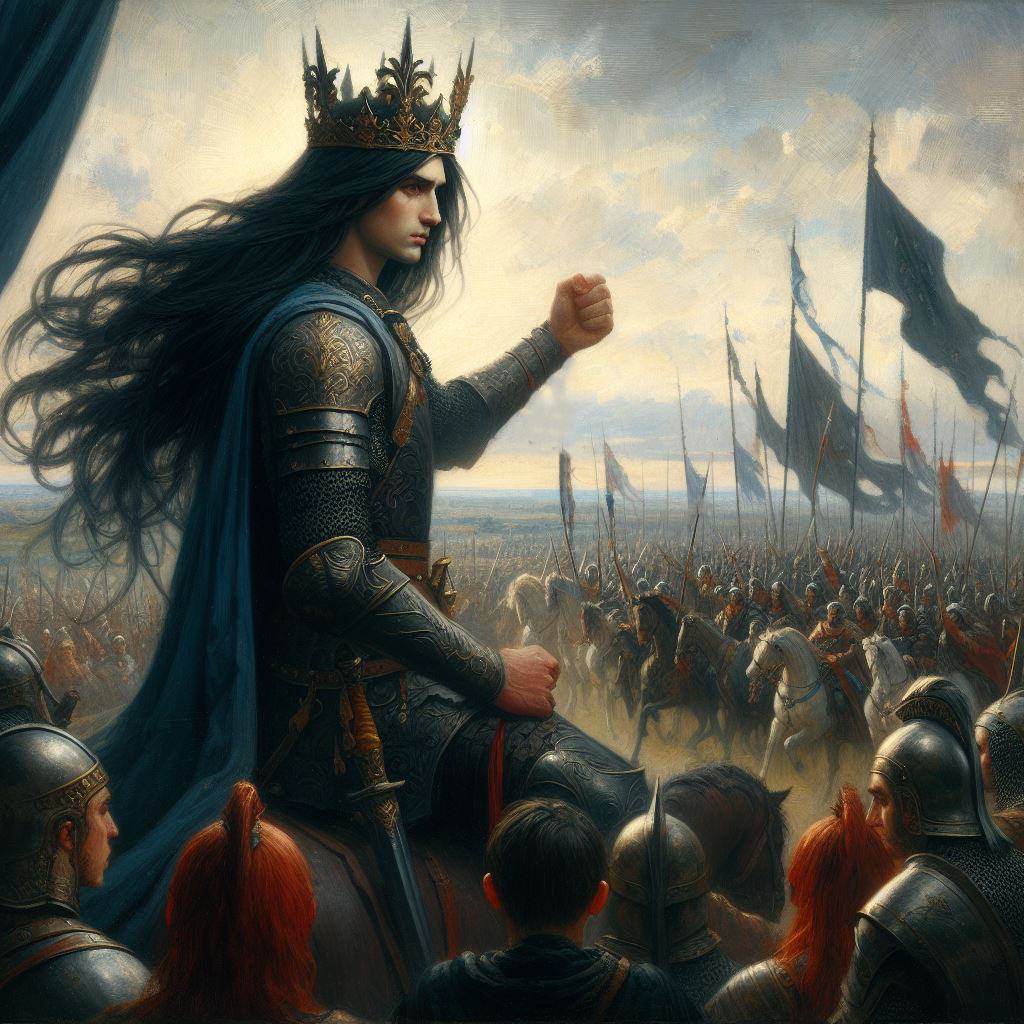 992 AC
992 AC
Norionor's Call
Gathering / ConferenceIn 992 AC, Norionor Whiteshield decided to unite the four kingdoms of men and began the greatest campaign the world had ever seen. The purpose of the young king was the preparation of Vitallia against the coming of Nedel, known as “The Hunter”. Norionor promised lands of regions to be conquered to the lords of Sol, Sarta and Igros and gathered the largest army that ever existed in Central Vitallia. -
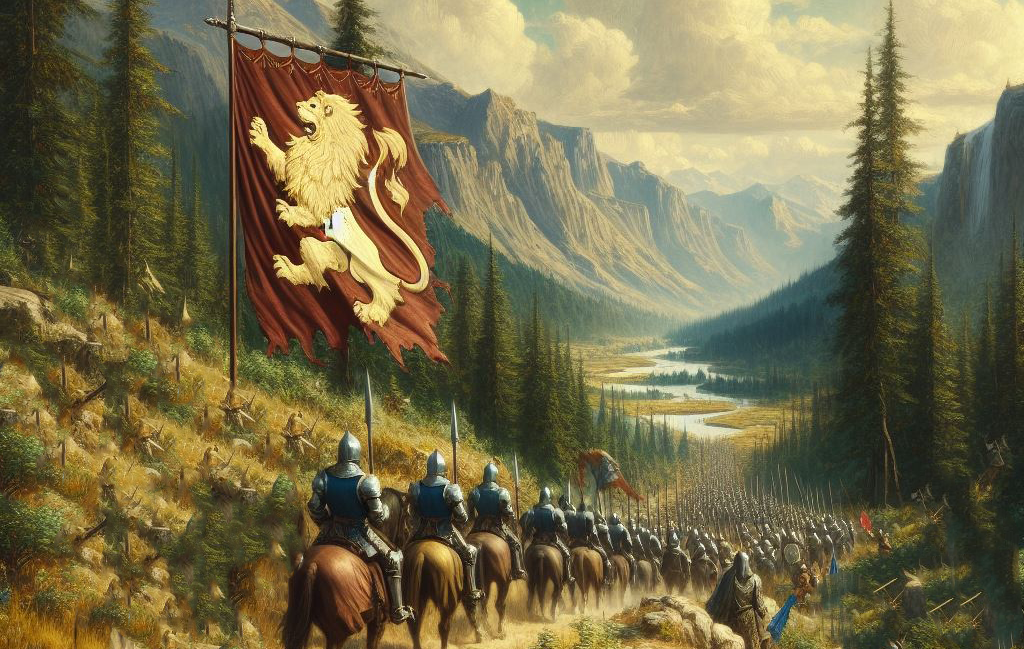 1001 AC
1001 AC
1003 AC
The March of the Lion
ExpeditionIn 1001 AC, the army of Norionor Whitehsield of Lothen began the “March of the Lion” and swiftly conquered the kingdoms of Armorgrand, the Freelands and even Rose, the kingdom of magic. Every victory bred a new title for the king of men. "The Blood of the First Knights", "The Lion of the South", "Naranor", the Divine Man. He called his soldiers Naranors, believing that they ascended into something greater than the rest of the races of Vitallia. Norionor always kept in his company Akreyn Thiaspis who consulted him, and followed him throughout the whole campaign. -
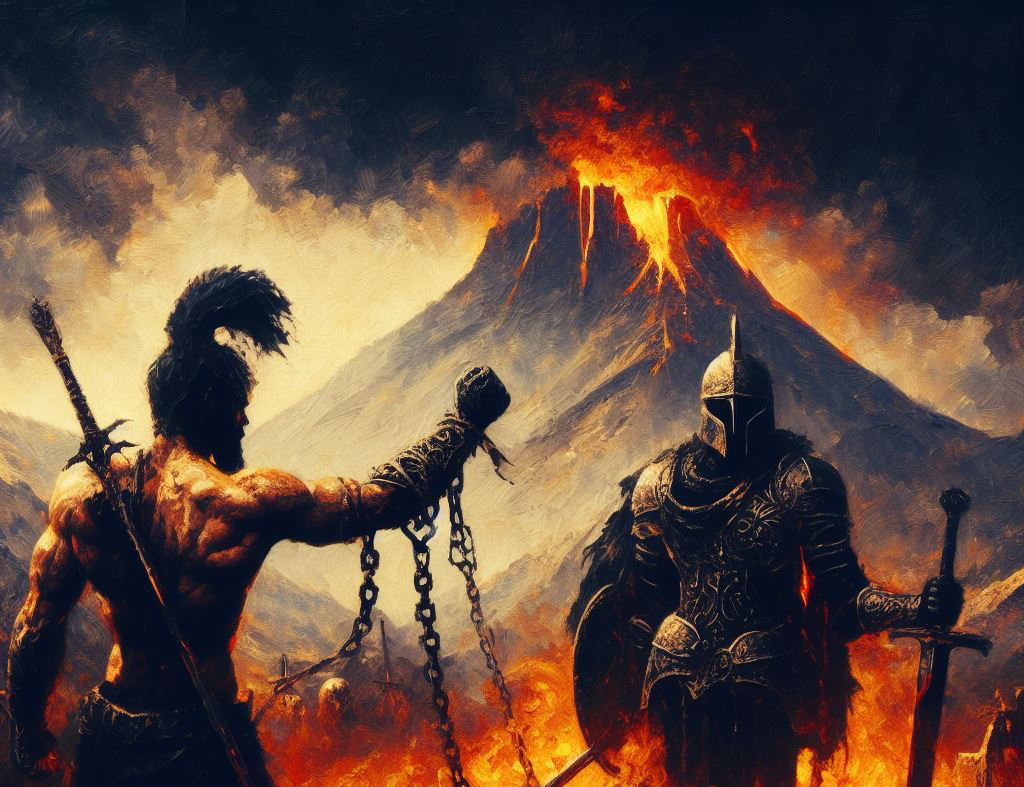 1001 AC
1001 AC
20 /10
The Battle of Vlada
Military: WarNorionor Whiteshield defeats the Armorian army, his first significant conquest during the March of the Lion. -
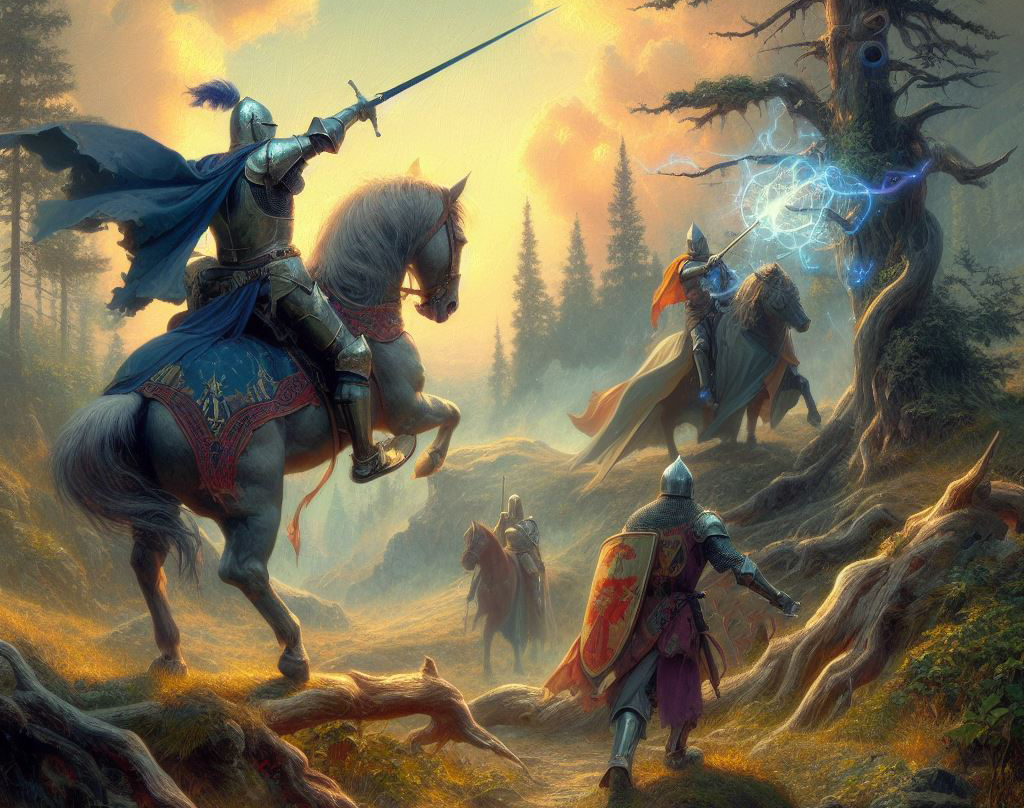 1003 AC
1003 AC
17 /1
The Battle of Eastrose
Metaphysical / Paranormal eventIn 1003 AC, Norionor Whiteshield attacked the kingdom of Rose during a huge campaign that had originated from Lothen. A phenomenon connected with the Sentinel, deactivated all magic temporarily, leaving the kingdom exposed, and the Queen was forced to bend the knee, and submit her armies to Norionor and his cause. -
1003 AC
20 /1
The Treaty of Thorns
Diplomatic actionThe Treaty of Thorns was signed following the brief but impactful conquest of Rose by King Norionor Whiteshield of Lothen. Though Rose regained independence soon after his death, the treaty formalized a complex relationship between the two kingdoms—one built on uneasy cooperation, shared defense, and the memory of forced submission.
-
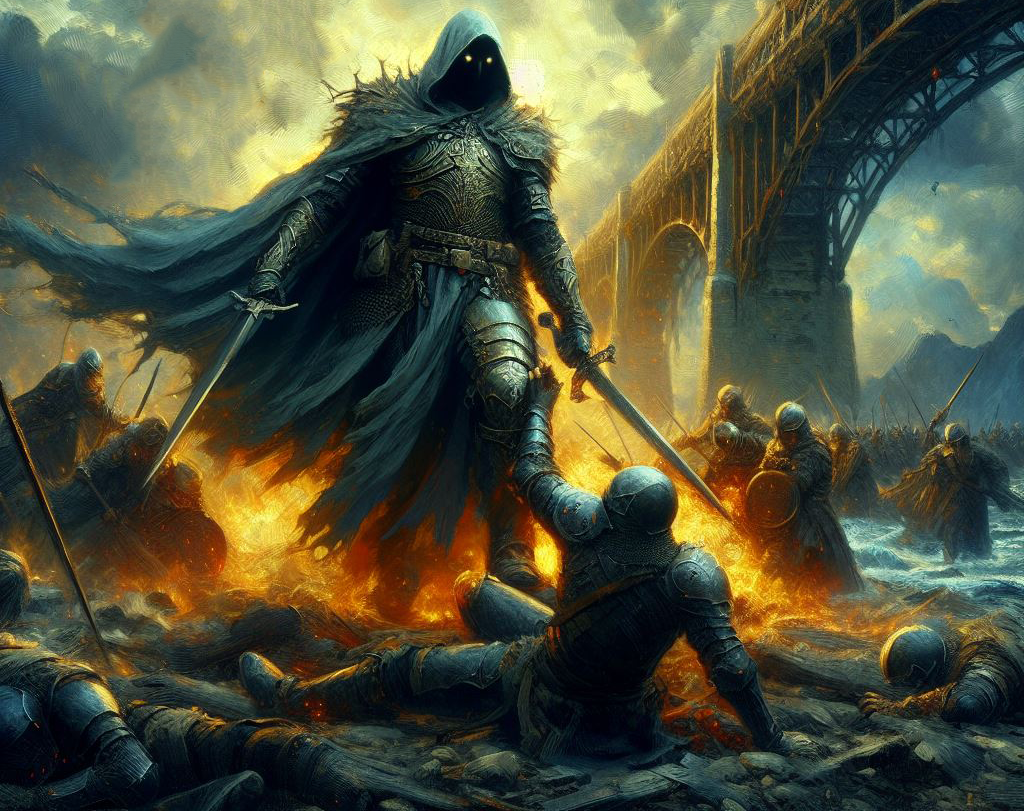 1003 AC
1003 AC
12 /11
The Battle of the Swordbridge
Life, DeathIn 1003 AC, after three years of victories, Norionor, king of Lothen, died in the “Battle of the Swordbridge” after a duel against the creature “Element”. Days before, a certain decline regarding his physical and mental health had been noticed, showing signs of strange behavior, madness and sorrow. His body was returned to Bladefall a year later, where he was welcomed as a Messiah by the people of Lothen, with celebrations and festivals throughout the land.Location
Swordbridge -
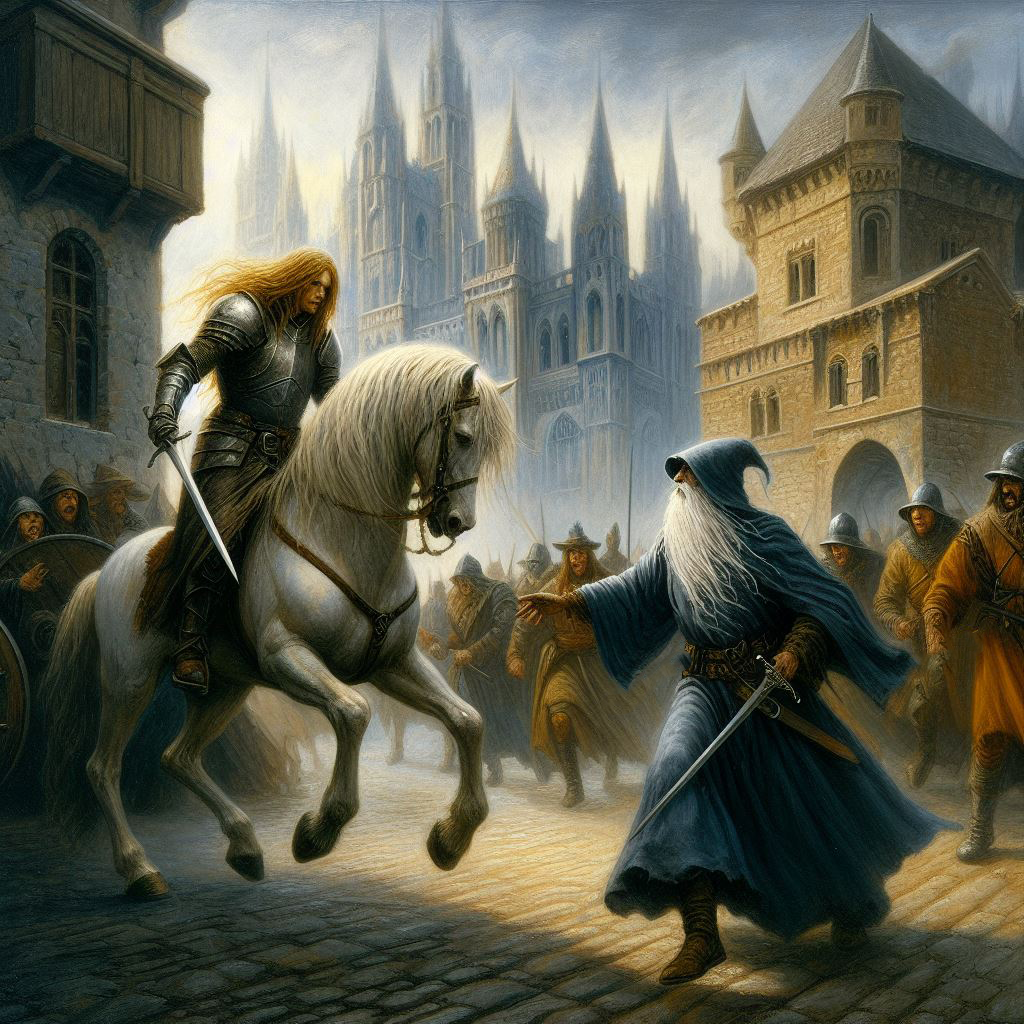 1110 AC
1110 AC
Magic Prohibition in Lothen
Military actionIn 1110 AC, Luther Whiteshield endorsed a law that forbade the use of magic within the kingdom of Lothen, with the exception of members of the royal army and selected individuals. Many magic users were crucified at the king’s command and others, fled to the mountains of Armorgrand, Dragoria and to the Trident Empire in order to survive. -
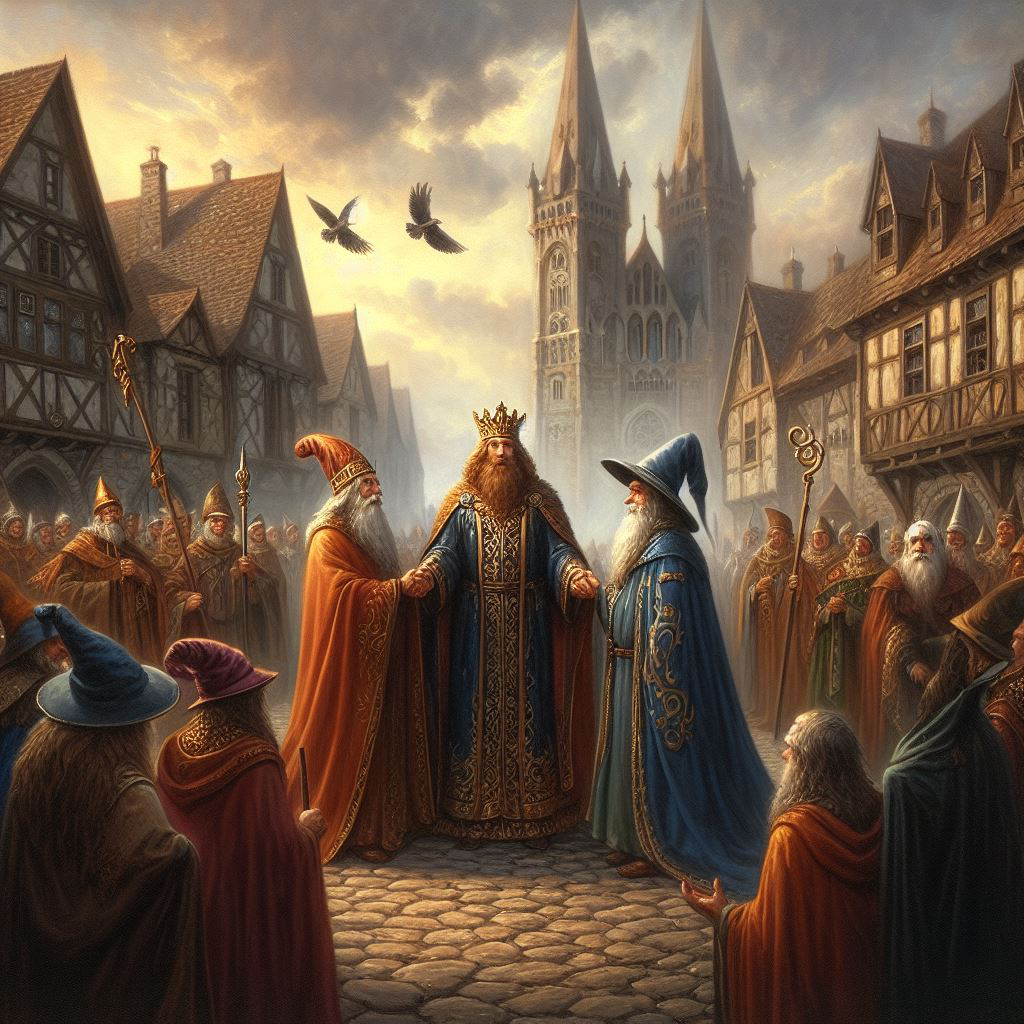 1204 AC
1204 AC
Treaty of the Root
DisbandmentIn 1204 AC, King Meleborn Whiteshield of Lothen formally lifted the long-standing restrictions on magic and sought to make amends for the damage caused during the era of the Runik Movement, a dark chapter in history marked by the persecution and suppression of magic-users across the continent. Decades earlier, during the height of the prohibition, the Kingdom of Rose came under heavy assault by the Brutgors of Armoria, a barbaric people from the southern mountains. In desperation, the Rosian crown invoked the Treaty of Thorns, appealing to Lothen for military aid. However, the Lothenian court, still deeply entrenched in anti-magic policy, refused to intervene unless Rose agreed to adopt the same laws and purge its magical institutions. Rose stood its ground and rejected the demand. The result was years of brutal raids and destruction along Rose’s borders. With its magical defenses crippled and no help from its supposed ally, the kingdom suffered greatly. King Meleborn, inheriting the throne in a time of reflection and transition, acknowledged these failures. As an act of reconciliation and renewed diplomacy, he signed the Treaty of the Root, strengthening the fragile bond once established by the Treaty of Thorns. Unlike previous accords, this treaty was not about dominance or submission, it was about healing. Under its terms, Lothen sent seven thousand men and women, not as soldiers, but as builders, healers, scholars, and protectors, tasked with rebuilding damaged cities, restoring arcane institutions, and protecting vulnerable border regions. Many among them were families of former exiles or magic-users seeking new beginnings. To mark the turning of an age, Meleborn issued “The Apology of the Lion”, a royal decree that promised lands, titles, and protection to all magic-users willing to settle in Lothen and aid in its magical revival. His dedication to restoring the dignity of the arcane earned him the name Meleborn the Admirer. The Treaty of the Root became a cornerstone of peaceful relations between Rose and Lothen, binding the two kingdoms more closely, not through conquest or force, but through shared rebuilding, reparation, and respect for magic.
-
 1400 AC
1400 AC
The Threat Of Edunkas
Metaphysical / Paranormal eventThe looming threat of Edunkas, a colossal spider, casts a shadow over Lothen. The creature approaches the city of Enis, instigating fear. In response, the Blade Guardians intervene to repel the colossal spider, forcing it to retreat to its lair.
Location
Enis -
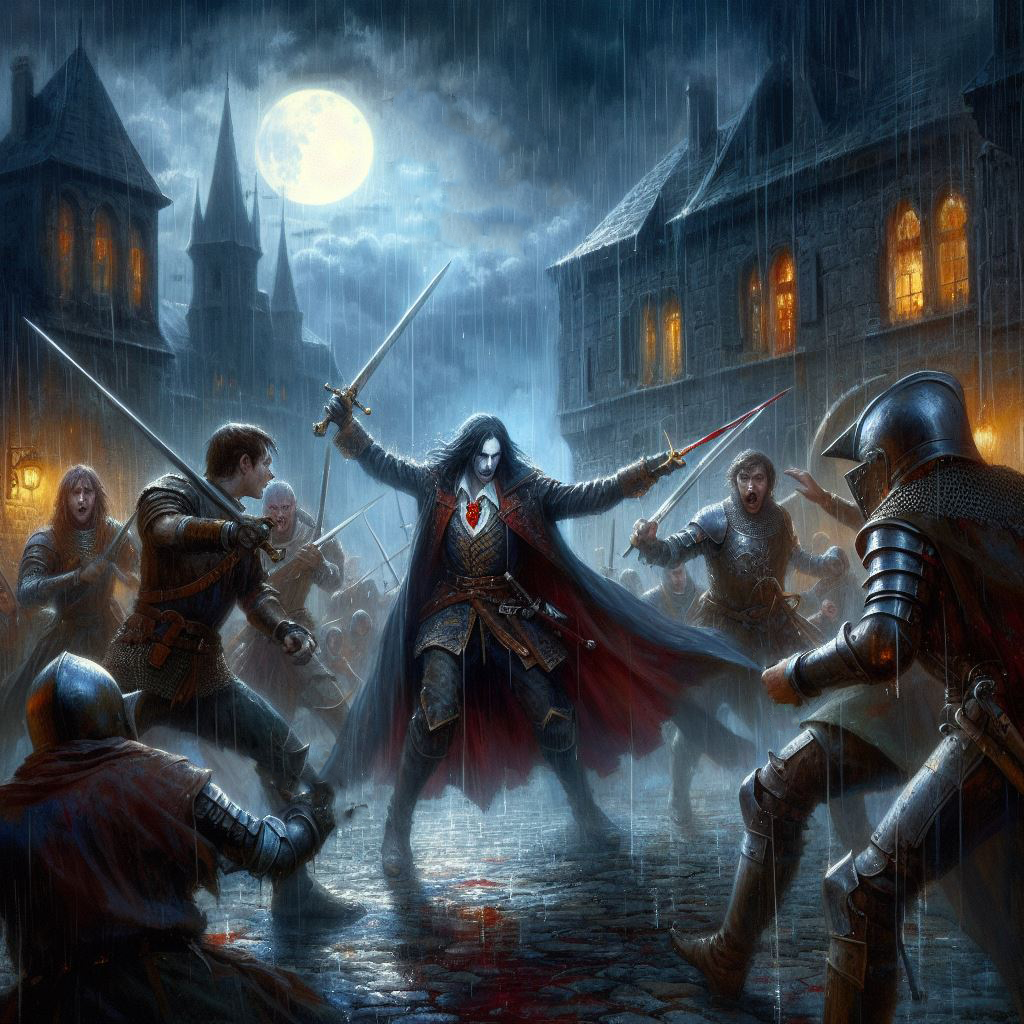 1480 AC
1480 AC
1520 AC
The Pure Lion of Lothen
Civil actionIn 1480 AC, under the reign of Destin Whiteshield of Lothen, the movement of the “Pure Lion” was created and supported by the king and certain powerful families. The movement wanted the banishment of the vampires from the kingdom and the cancellation of their authority regarding political and military matters. King Destin supported the idea and became known as “Destin the Pure”. He sent Akreyn Thiaspis away and ordered the crucifixion of all the vampires of Lothen. The movement found great support from the common people, and massive inner conflicts occurred, in a time filled with assassinations, attacks and highly increased crime. Large numbers of people fled the capital and the kingdom during the next years. The movement seized to exist along with the end of Destin Whiteshield’s reign in 1520 AC. -
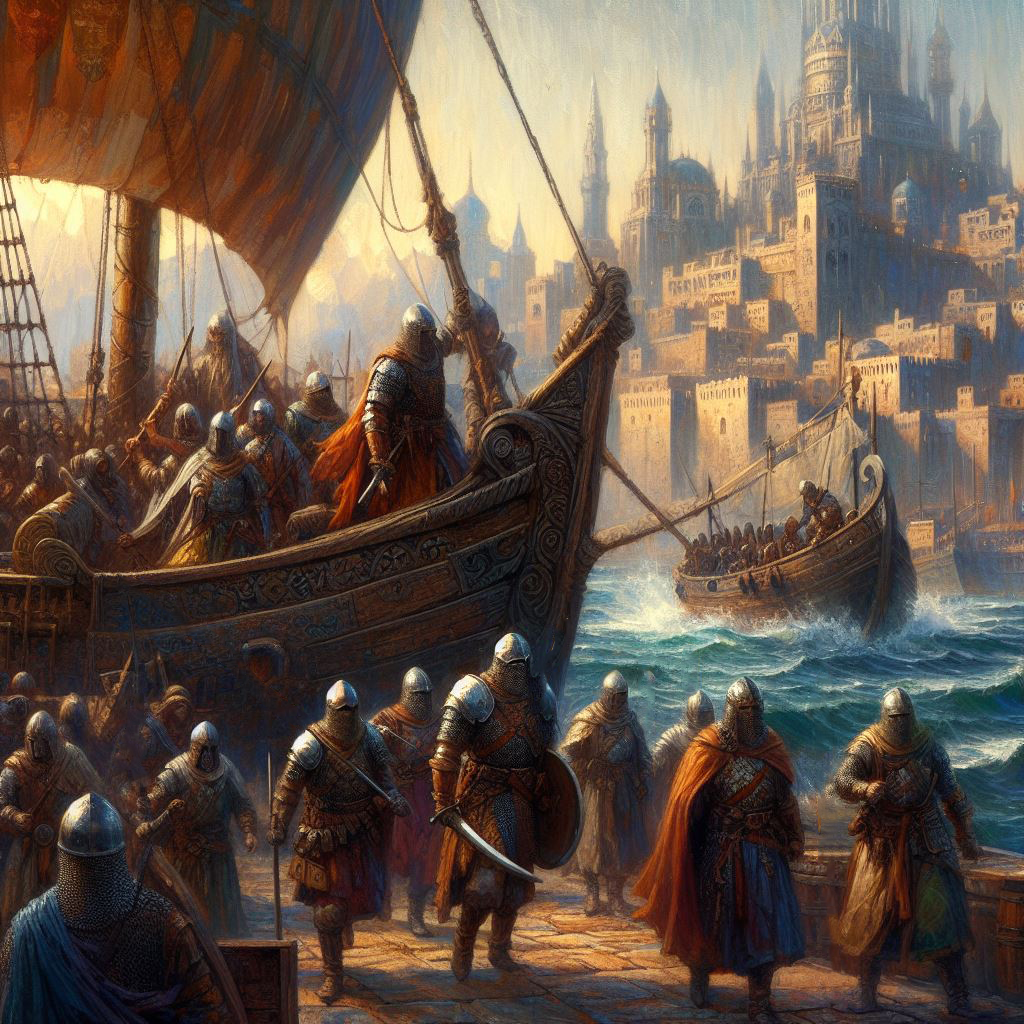 1986 AC
1986 AC
1990 AC
Lothen's Daughter
ExpeditionIn 1986 AC, King Vheod Whiteshield V answered the call of Goualekir, the eastern realm under divine threat, and prepared Lothen for the long-foretold return of Nedel the Hunter. Bladefall, believed to be one of the Four Chosen Cities in ancient prophecy, was bound by fate to take part in the coming war. Thus began the formation of the Army of the Daughter, a united force drawn from across the Forkland vassal states. King Vheod summoned the full might of the Lion Army, but Sarta refused the call. The Sartans claimed their blood had been spilled too often for Lothen’s wars, and they would not bleed again for a prophecy born in the East. This refusal sparked a rebellion. However, with the threat of Nedel’s return looming large, King Vheod could not divide his forces. Pressed by the greater danger beyond the horizon, he chose to march eastward and delay dealing with the uprising. Sarta seized the opportunity, declared autonomy, and severed its formal ties to the Forklands. Despite Lothen’s later attempts to reassert control, Sarta remained free, thanks to a covert alliance with the South Freelanders. Smugglers and riders carried arms and supplies through Dragoria’s passes into Sartian hands, in exchange for the promise of a shared frontier free from Forkland influence. Over time, Sarta’s autonomy hardened into a reality that even Lothen’s court begrudgingly acknowledged, though tensions simmered beneath the surface. By the time the War of the Daughters began in 1990 AC, the cracks in the Forklands had already begun to show. And when Lothen turned its eyes west again, it would be toward a defiant Sarta, no longer just a rebellious vassal, but a kingdom in its own right.
-
 1990 AC
1990 AC
15 /9
The Battle of the Four Daughters
Military actionThe God Nedel spearheads an assault against the united Daughters/Cities of Vitallia, resulting in the 2nd Siege of Goualekir. The conflict culminates in the Battle of the Four Daughters, a pivotal moment in Vitallia's history, rivaling even the significance of the Great War of the Gods. The resolute defense succeeds in repelling Nedel's attack, banishing his essence from Vitallia and securing a crucial victory for the united forces.Location
Goualekir

